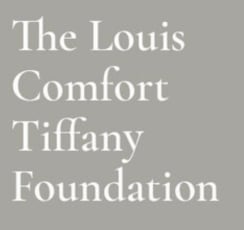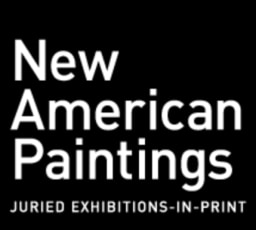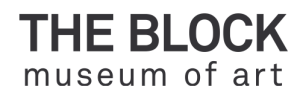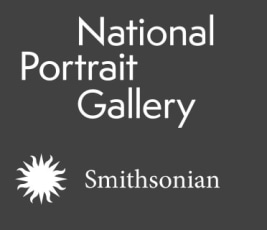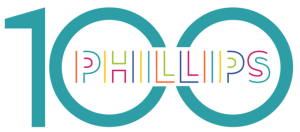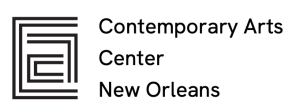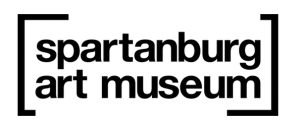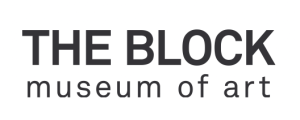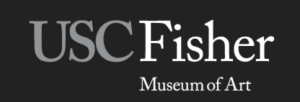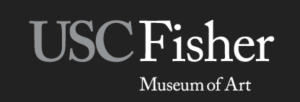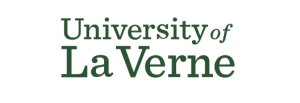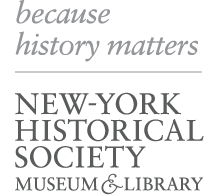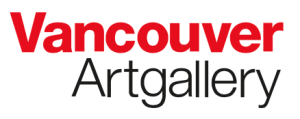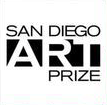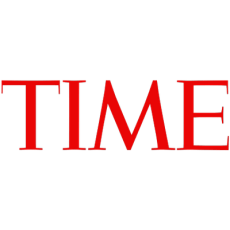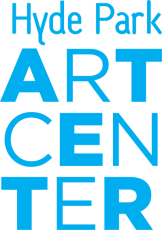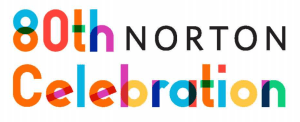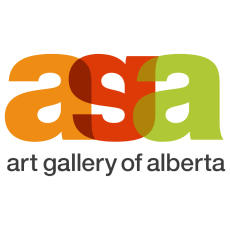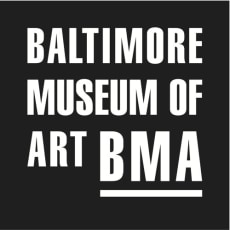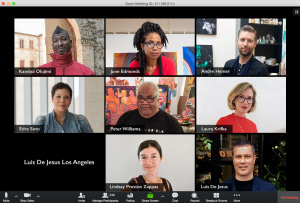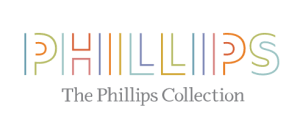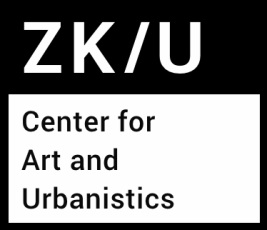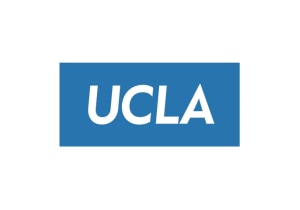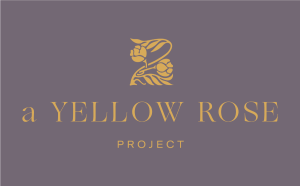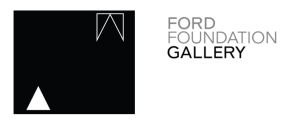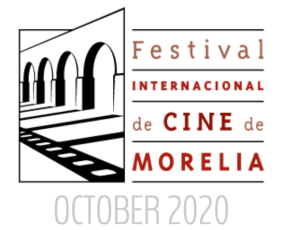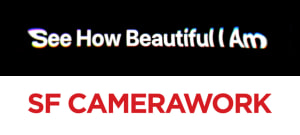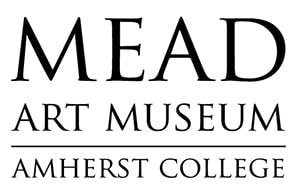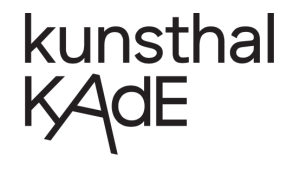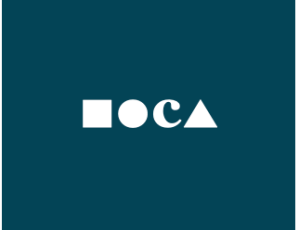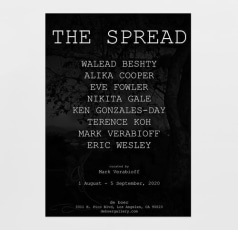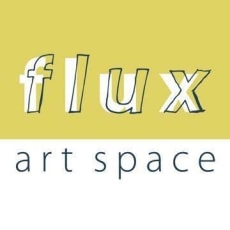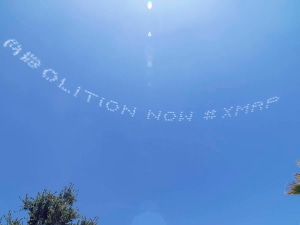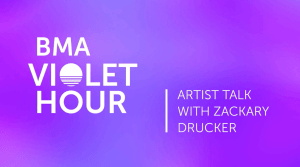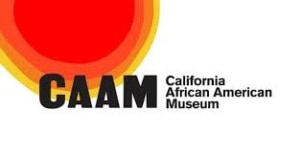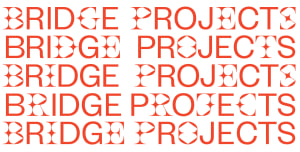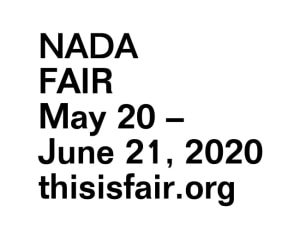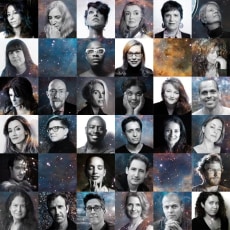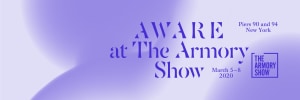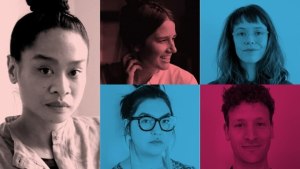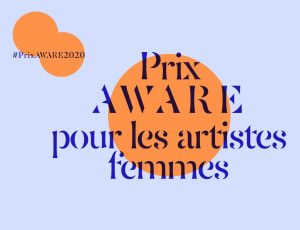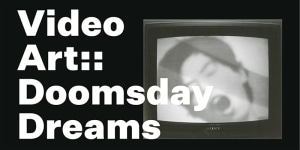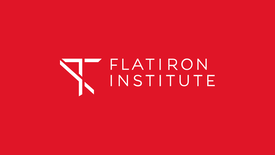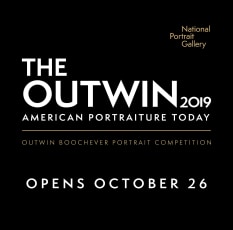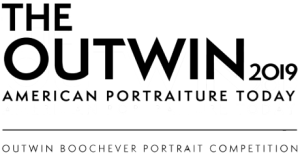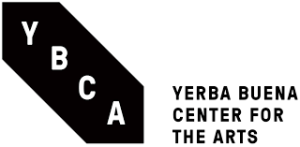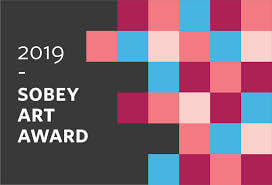
VIRTUAL ROUNDTABLE: DR. ANITA BATEMAN, JUNE EDMONDS, YRNEH GABON, AND CCH POUNDER IN CONVERSATION
March 29, 2024
Luis De Jesus Los Angeles invites you to a virtual roundtable with Dr. Anita Bateman, June Edmonds, Yrneh Gabon, and CCH Pounder on Friday, March 29 at 1pm PT.
Join us for a conversation between Curator and Art Historian, Dr. Anita Bateman, artists June Edmonds and Yrneh Gabon, and actress and art patron, CCH Pounder about the themes, influences, and works present in our current exhibitions, "Meditation on African Resilience" by June Edmonds and "Spirit Leads Me" Yrneh Gabon.
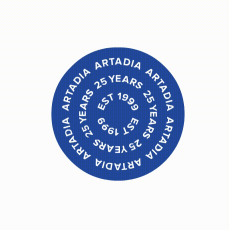
PHUNG HUYNH RECEIVES 2024 MARCIANO ART FOUNDATION ARTADIA AWARD
March 19, 2024
Luis De Jesus Los Angeles is thrilled to announce Phung Huynh as a recipient of the 2024 Los Angeles Artadia Awards. Since its inception in 1999, Artadia has steadfastly championed emerging talents, leaving an indelible mark on the cultural landscape. Over the past 25 years, Artadia has been a catalyst for artistic innovation, providing crucial financial support, mentorship, and recognition to countless artists who have gone on to shape the culture of contemporary art. In its 25th year, Artadia is thrilled to continue doing what it does best – providing impact that not only includes financial assistance, while also cultivating a community that values artistic expression and champions the next generation of visionaries.

MORE THAN 40 GALLERIES THROUGHOUT GREATER LOS ANGELES JOIN THE PARTICIPATING GALLERY PROGRAM FOR PST ART: ART & SCIENCE COLLIDE
Getty today announced that more than 40 art galleries in Los Angeles and throughout Southern California have joined the Participating Gallery Program of PST ART: Art & Science Collide, the expansive collaborative event that will begin on September 15, 2024. In this third edition of PST ART—formerly known as Pacific Standard Time—dozens of museums, scientific institutions, and performing arts organizations will offer a multidisciplinary and multifaceted exploration of the intersections of art and science. Their exhibitions and programs, on view over the course of five months, will be amplified by the presentations of the galleries in this third iteration of PST ART’s Participating Gallery Program.

KEN GONZALES-DAY AWARDED 2024 ART JOURNAL AWARD AT NATIONAL COLLEGE ART ASSOCIATION CONFERENCE
Luis De Jesus Los Angeles is pleased to announce Ken Gonzales-Day as the 2024 awardee of the Art Journal Award for his essay "Race, Whiteness, and Absence in Studio Practice," 2023.

"HECTOR DIONICIO MENDOZA: BUSCANDO FUTURO / LOOKING FOR A FUTURE" EXHIBITION WALKTHROUGH
February 10, 2024
HECTOR DIONICIO MENDOZA: Buscando Futuro / Looking For A Future exhibition walkthrough will be held on Saturday, February 10, at 2pm PST.
Hector Dionicio Mendoza’s work materializes oral histories, ancient wisdom, familial parables, and personal and communal experiences to engage the many myths and realities of migration. Combining an array of sculptural forms and materials—including assemblage, cast, and hand-sculpted techniques, along with found, salvaged and industrial materials, his works are informed and guided by his own personal experiences and the realities and politics of the U.S./Mexico border. Fluctuating between abstraction and figuration, it ignites our consciousness with narratives that embrace magical realism and Latinx/e futurism while exploring themes of migration and the environment, spirituality, as well as the geographies of place, memory, identity, and the visualization of immigrant stories that expand upon a new latinidad.

"GRISELDA ROSAS: DONDE PASÓ ANTES (WHERE IT HAPPENED BEFORE)" EXHIBITION WALKTHROUGH
February 10, 2024
GRISELDA ROSAS: Donde Pasó Antes (Where It Happened Before) exhibition walkthrough will be held on Saturday, February 10, at 2pm PST.
Informed by her fluid experiences with the Mexico and US border and life between Tijuana and San Diego, Griselda Rosas deconstructs the ambiguities of identity and place, learned, and generationally passed subjugation, and the legacies of colonization and conflict. She often focuses on the pre-colonial and post-colonial war scenes and the introduction of Catholicism to Indigenous customs in the Americas as part of the Spanish colonial agenda. Rosas examines these histories alongside her roles as an educator and single mother, frequently collaborating with her young son to produce works that pulsate with the energy of an uninhibited child’s eye and hand.

HUGO CROSTHWAITE TO PARTICIPATE IN 2024 BORDER BIENNIAL / BIENAL FRONTERIZA 2024
Luis De Jesus Los Angeles is pleased to announce that Hugo Crosthwaite will participate in the 2024 Border Biennial / Bienal Fronteriza 2024. The 2024 Border Biennial / Bienal Fronteriza 2024 focuses on the unique identity of the borderland, which includes a diversity of experiences. The exhibition explores how artists define the region and what it means to them. Works on display speak to how artists in the borderland experience history, gender, culture, race, sexuality, food, environment, and politics. While most focus on the United States / Mexico border, the exhibition does provides an opportunity to reflect on a broader definition of borders and their conditions worldwide. On view from December 15, 2023 - April 14, 2024.
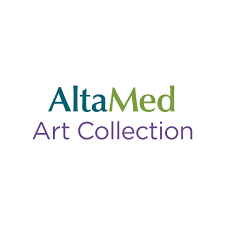
ALTAMED ART COLLECTION ACQUIRES KEN GONZALES-DAY'S "SECOND GARROTE", 2014-2023
Luis De Jesus Los Angeles is delighted to announce the acquisition of Ken Gonzales-Day's Photograph, Second Garrote, 2014-2023. Part of his Searching for California's Hang Trees series, which grew out the artist’s research into the history of lynching in the West, it was created to bring attention to the invisible history of racial violence in rural California. The AltaMed Art Collection in Los Angeles, one of the largest Chicano art collections in the world. Our sincere thanks to Susana Smith Bautista, chief curator of the AltaMed Art Collection.

THE CROCKER ART MUSEUM ACQUIRES HECTOR DIONICIO MENDOZA'S "FAMILIA UNIVERSAL/ UNIVERSAL FAMILY"
Luis De Jesus Los Angeles is delighted to announce the acquisition of Hector Dionicio Mendoza's Familia Universal/ Universal Family by the Crocker Art Museum. Hector Dionicio Mendoza’s works are informed and guided by his own personal experiences and the realities and politics of the U.S./Mexico border. Familia Universal (Universal Family) commemorates the journey that many migrant families have made and continue to make in order to start a new life in the U.S. The gallery extends its most sincere appreciation to Scott Shields, curator at the Crocker Museum, and board member Simon K. Chiu for his generous support.
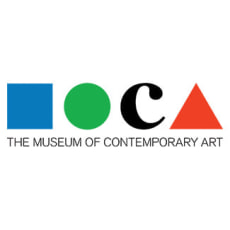
MUSEUM OF CONTEMPORARY ART, LOS ANGELES ACQUIRES SHERIN GUIRGUIS' "UNTITLED (BENNU)"
Luis De Jesus Los Angeles is delighted to announce the acquisition of Sherin Guirguis' Untitled (Bennu). Untitled (Bennu) is part of a series of works inspired by Farīd al-Dīn Aṭṭār’s 12th-century Sufi poem, The Conference of the Birds (Manṭeq al-ṭayr). The artist channels her ancestors, personal experiences, and agency as a woman to draw parallels between Aṭṭār’s story of self-awareness and kinship, and the mythologies of ancient Egypt’s sacred birds. Guirguis transforms designs of centuries-old Egyptian dovecotes (giant earthen towers built to house pigeons) into abstracted avian forms, bringing to light overlooked and silenced voices. The gallery extends its sincere gratitude to Anna Katz, curator, The Museum of Contemporary Art, Los Angeles and the Drawings and Photography Committee for its generous contribution.

PUBLIC ART DIALOGUE AWARDS EDRA SOTO THE 2024 PAD FOUNDERS AWARD FOR ACHIEVEMENT
Luis De Jesus Los Angeles is very pleased to announce that Edra Soto has been awarded the 2024 PAD Founders Award for achievement in the field of public art. Public Art Dialogue (PAD) is an organization devoted to public art. Often manifested in representational form, Edra Soto’s work walks the line between visual arts, social practice, immersive installations, and architectural interventions. She aims to challenge the boundaries between audience, artist and the work itself, prompting viewers to reconsider the nature of urban space, cross-cultural dynamics, the legacy of colonialism, and personal responsibility. Soto’s upbringing and relationships with communities in Puerto Rico and the US informs her artistic practice.

O’MELVENY & MYERS LLP, LOS ANGELES ACQUIRES EDRA SOTO’S "LET LOVE WIN", 2020
Luis De Jesus Los Angeles is delighted to announce the acquisition of Edra Soto’s monumental sculptural installation, Let Love Win, by the esteemed Los Angeles law firm O’Melveny & Myers LLP. Soto created Let Love Win in response to the killings of George Floyd and Breonna Taylor and as her personal stand in the social justice movement and Black Lives Matter. The work spans more than 20 feet and consists of over four hundred portraits of victims of police brutality that have been individually embossed into soft metal, resembling a contemporary version of a religious votive or milagro. Our sincere thanks to Elise Barclay, curator of the collection.

CARLA JAY HARRIS AWARDEE OF THE ROBINSON PARK RECREATION CENTER PUBLIC ART PROJECT
Luis De Jesus Los Angeles is pleased to announce Carla Jay Harris as an awardee of the Robinson Park Recreation Center Public Art Project. Harris i. one of two artist chosen whom the city has engaged to conduct extensive research and community engagement through collaboration with Northwest Pasadena residents and stakeholders, and develop specific content and themes which will serve as the basis for the public art concept at the Center.

TRISTRAM LANSDOWNE ANNOUNCED AS A ROSWELL ARTIST IN RESIDENCE RECIPIENT
Luis De Jesus Los Angeles is pleased to announce Tristram Lansdowne as an awardee the Roswell Artist-in-Residence Program. Well known by visual artists as the "Gift of Time", the Roswell Artist-in-Residence Program was established in 1967 to provide gifted studio-based visual artists with the unique opportunity to concentrate on their work in a supportive, collegial environment for an entire year. This gift of time allows artists to work without distraction in an effort to break new ground and focus on individual goals. The Roswell Artist-in-Residence Program’s interest is in strengthening the vitality of the visual art in New Mexico and has been a catalyst in broadening community understanding of contemporary art for over fifty years.
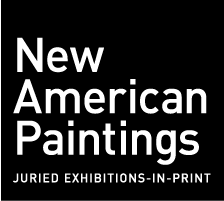
VIAN SORA FEATURED IN NEW AMERICAN PAINTINGS
Luis De Jesus Los Angeles is pleased to announce Vian Sora has been featured in New American Paintings, issue South #166. First published in 1993, New American Paintings is bimonthly juried exhibition in print. Each regionally-focused edition features the work of forty painters. Working with curators from the nation’s top museums, we review the work of more than five thousand artists a year and publish the best we find.

ARTIST TALK: FACE TO FACE IN CONVERSATION, KEN GONZALES-DAY & ERIKA HIRUGAMI
January 18, 2023
Come join for a conversation at 5 pm with featured artist Ken Gonzales-Day and Erika Hirugami, Founder & CEO of Curator Love, Co-Founder of the UNDOC+Collective and professor at Claremont Graduate University. They will discuss their respective projects and the past, present, and future of cultural representation. More conversation and refreshments to follow the presentation.
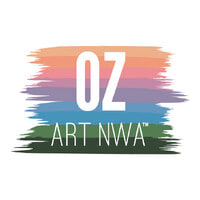
OZ ART NWA ACQUIRES HECTOR DIONICIO MENDOZA'S SCULPTURE "COYOTA/E", 2022
December 20, 2023
Luis De Jesus Los Angeles congratulates Hector Dionicio Mendoza on the acquisition of "Coyota/e", 2022, by OZ Art NWA in Bentonville, AR. We extend our sincere thanks and appreciation to Olivia Walton, co-founder and chair of OZ Art NWA, the board of the foundation, along with Chad Alligood, independent curator and art historian.
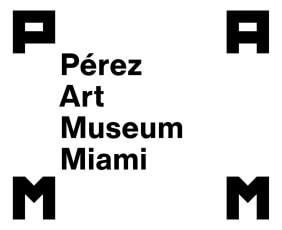
PÉREZ ART MUSEUM MIAMI (PAMM) ACQUIRES EVITA TEZENO'S PAINTING "THE RHYTHM OF STREET LIFE", 2023
December 20, 2023
Luis De Jesus Los Angeles is delighted to announce the Pérez Art Museum's acquisition of Evita Tezeno's collage-painting, "The Rhythm of Street Life", 2023. Our heartfelt congratulations to Evita and our most sincere appreciation to Maritza Lacayo, Assistant Curator, Pérez Art Museum Miami, the PAMM curatorial team, and PAMM's Collectors Council.
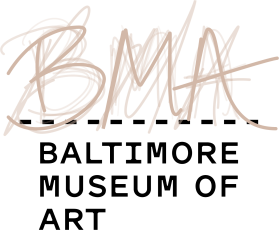
BALTIMORE MUSEUM OF ART (BMA) ACQUIRES MIMI SMITH'S SEMINAL SCULPTURE "DON'T TURN BACK", 1985
Luis De Jesus Los Angeles is thrilled to announce the Baltimore Art Museum's acquisition of Mimi Smith's sculpture "Don't Turn Back", 1985. Our congratulations to Mimi Smith and our sincere appreciation to Jessica Bell Brown, Curator and Head, Department of Contemporary Art, Baltimore Museum of Art; Asma Naeem, The Dorothy Wagner Wallis Director; the curatorial team, as well as the Contemporary Accessions Committee and the Board of Trustees.

ARTIST TALK: SHERIN GUIRGUIS AND KRIS KURAMITSU IN CONVERSATION
December 16, 2023
Join Sherin Guirguis and Kris Kuramitsu, Senior Curator at Large at The Mistake Room in Los Angeles, for an in-depth exploration of Sherin's practice and her current solo exhibition, A’aru // Field of Reeds: Gathering.
Using site, text, and recovered histories as the core of each series, Egyptian-American artist Sherin Guirguis develops projects that engage audiences in a dialogue about power, agency, and social transformation. Her research-based practice aims to make the often invisible work of historically under-recognized women visible once more, engaging both formal and social concerns by juxtaposing the reductive Western language of minimalist aesthetics with that of Eastern ornamentation. Inspired by the epic Sufi poem "The Conference of the Birds," her solo exhibition presents a new series of mixed media paintings combining gem-toned mineral pigments and 24k gold on meticulously hand-cut paper.

LIA HALLORAN AND KIP THORNE TALK AND BOOK SIGNING WITH JESSE DAMIANI
December 16, 2023
In conjunction with her current solo exhibition, Warped Side, Lia Halloran and Nobel Prize-winning astrophysicist Kip Thorne are joined by curator and writer Jesse Damiani to discuss their 13-year collaborative odyssey which resulted in The Warped Side of Our Universe — An Odyssey Through Black Holes, Wormholes, Time Travel, and Gravitational Waves. The book, published by Norton/Liveright and released this past October, features Thorne’s poetry and Halloran’s original art to create a new type of book that is a “shape-shifting pageant of art, science, and poetry” and doubles as a vehicle for communicating major scientific breakthroughs of our time.
The paintings presented in this exhibition are a cumulation of the friendship and collaboration between Halloran and Thorne to mobilize science, art, and poetry to explore aspects of the universe that many people are curious about: black holes, wormholes, and other strange phenomena.

EDRA SOTO ANNOUNCED AS A JOHN MICHAEL KOHLER ARTS CENTER 2024 ARTS/INDUSTRY RESIDENT
Luis De Jesus Los Angeles is pleased to announce Edra Soto as a 2024 recipient of the John Michael Kohler Arts Center 2024 Arts/Industry Residency program for their 50 year anniversary. Hundreds of artists have benefited from the celebrated Arts/Industry residency program since its beginning in 1974. Arts/Industry offers artists the time and space to focus on the creation of new work and a unique location for their studios. Artists-in-residence work at the Kohler Co. factory in the Pottery and/or Foundry. Participants are exposed to a body of technical knowledge that enables and encourages them to explore new ways of thinking and working.

DON’T MISS THESE 5 GALLERIES MAKING THEIR ART BASEL MIAMI BEACH DEBUTS
December 8, 2023
These newcomer galleries from Cairo, Warsaw, and beyond, are rising stars on the scene.
In Luis de Jesus’s powerful booth, three Latinx artists explore the landscape in relationship to migration, historicism, and the legacy of colonialism in works crossing sculpture, photography, and mixed media. Artist Edra Soto’s series of “Graft” sculptures reconsider decorative architectural elements found in mid-20th century Puerto Rico, namely rejas (wrought iron fences) and quiebrasoles (concrete breeze blocks). In a searing series of postcard-sized images displayed on one wall of the booth, Ken Gonzales-Day has performed interventions on historic scenes of violence in the state of California, erasing the victims and leaving behind only the perpetrators. Meanwhile, Hector Dionicio Mendoza has created a large-scale sculptural wall-work of a coyote-human hybrid. Beyond the Nova presentation,Luis De Jesus is also showing a luminous monumental painting by Iraqi-American artist Vian Sora in the Meridians section of the fair.
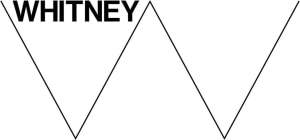
WHITNEY BIENNIAL 2024 IS BIGGER THAN EVER, WITH THE ADDITION OF 5 CURATORS FOR THE FILM AND PERFORMANCE PROGRAM
December 6, 2023
Co-organizers Meg Onli and Chrissie Iles select fellow filmmakers, artists, and curators to help develop the unprecedented Whitney Biennial 2024: Even Better Than the Real Thing, opening March 20, 2024. The Whitney Museum of American Art announces the addition of five curators to help lead the film and performance program for the 2024 Whitney Biennial. Co-organizers Chrissie Iles and Meg Onli have invited Korakrit Arunanondchai, asinnajaq, Taja Cheek, Greg de Cuir Jr, and Zackary Drucker to join them in developing a Biennial that goes beyond the Museum’s traditional in-gallery presentation to showcase the latest creativity and innovation in art, film, performance, and sound.
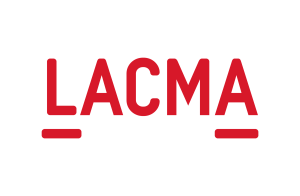
LACMA ACQUIRES KEN GONZALES-DAY'S "RUN UP" AND ANTI-LYNCHING DRAWING
Luis De Jesus Los Angeles is very pleased to announce the Los Angeles County Museum of Art's acquisition of two works by Ken Gonzales-Day: Run Up, 2002, a photograph from the Searching for California's Hang Trees series, and Untitled (After Hale Woodruff, Giddap, 1935), 2021, from the Anti-Lynching Drawings (with Figures Removed) series.
The gallery extends its most sincere thanks to Eve Schillo, Assistant Curator of the Wallace Annenberg Photography Department, and the LACMA Development team for helping to make this acquisition possible, along with Paula Ely and Cesar Rueda for their generous contribution.

3ARTS ANNOUNCES 2023 NEXT LEVEL AWARDS
3Arts, the Chicago-based nonprofit grantmaking organization, announced the recipients of its 3Arts Next Level Awards—$50,000 unrestricted cash awards given to past 3Arts awardees—during the festive 3Arts Awards Celebration held last night at the Harris Theater for Music and Dance. While 3Arts has in the past awarded three Next Level grants, the roster this year was expanded to include two additional awards for teaching artists; at $50,000, this is the largest no-strings-attached cash award for teaching artists in the world. 2023 Next Level recipients are teaching artists Miguel “Kane One” Aguilar and Regin Igloria and visual artists Dianna Frid, Edra Soto, and Dorian Sylvain in recognition of their outstanding work in the arts and in neighborhoods across Chicago.
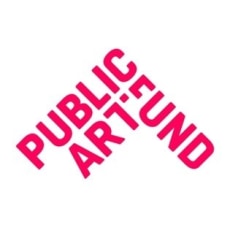
PUBLIC ART FUND’S ANNOUNCES 2024 EXHIBITION PROGRAM, INCLUDING "EDRA SOTO: GRAFT"
Public Art Fund will debut Edra Soto’s new interactive metal and terrazzo sculptural works at Doris C. Freedman Plaza in Central Park. The artist’s ongoing series, Graft, integrates architectural intervention and social practice to investigate the relationships between Puerto Rican cultural memory, its African and Black heritage, and the threads of colonial historical lineage in the United States.
Her first large-scale public art commission in New York City, Soto’s Public Art Fund project marks the next iteration of her Graft series. Soto will continue her practice of using rejas, patterned iron-wrought screens ubiquitous in post-war Puerto Rican architecture, to illustrate the complex relationship between historical memory and community involvement. A stand-alone steel lattice-work screen will stretch across Doris C. Freedman Plaza, accompanied by domino tables and chairs that invite audiences to sit down for a game, clarifying Soto’s call for a public forum.
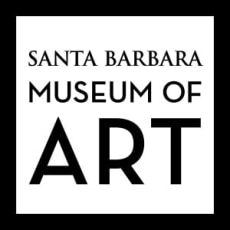
THE SANTA BARBARA MUSEUM OF ART ACQUIRES VIAN SORA'S "DILMUN"
Luis De Jesus Los Angeles is delighted to announce the Santa Barbara Museum of Art's acquisition of Vian Sora's painting Dilmun. Our hearty congratulations to Vian Sora on having her second work enter the permanent collection. The gallery also extends its most sincere appreciation to James Gleeson, PhD, Curator of Contemporary Art, Santa Barbara Museum of Art; the Collections Committee and the SBMA Board of Trustees.
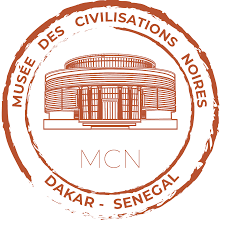
YRNEH GABON AWARDED MUSEUM OF BLACK CIVILIZATION ARTS RESIDENCY
Luis De Jesus Los Angeles is pleased to announce that Yrneh Gabon has been awarded the 2024 Arts Residency and Black History, at the Museum of Black Civilization, Dakar, Senegal. Gabon will be living and working in Dakar, Senegal for the duration of his residency.
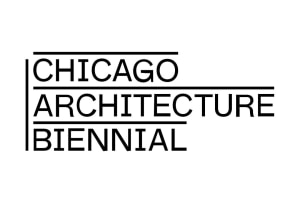
EDRA SOTO ANNOUNCED AS CHICAGO ARCHITECTURE BIENNIAL PARTICIPATING ARTIST
This is a Rehearsal–the title of CAB 5–explores how contemporary environmental, political, and economic issues are shared across national boundaries but are addressed differently around the world through art, architecture, infrastructure, and civic participation. CAB 5 builds on and expands Floating Museum’s ongoing work, including site-responsive art and design projects and public programs, to explore divergent interpretations of infrastructure, history, and the role of aesthetics as a mode for expanding how we frame the relationship between our environments and ourselves. Works will be on view from November 01, 2023–February 11, 2024.

HARVARD COLLEGE OBSERVATORY AND THE ASTRONOMICAL PHOTOGRAPHIC PLATE COLLECTION (HARVARD PLATE STACKS) ACQUIRE LIA HALLORAN
Luis De Jesus Los Angeles is thrilled to announce the acquisition of six unique cyanotypes by Lia Halloran, by the Harvard College Observatory and the Astronomical Photographic Plate Collection (Harvard Plate Stacks).
The gallery congratulates Lia Halloran on having her work enter the collections of these esteemed institutions and extends its sincere appreciation to Thom Burns, Curator of Astronomical Photographs, Center for Astrophysics, Harvard & Smithsonian. The Harvard College Observatory (HCO) is a research arm of the Faculty of Arts and Sciences, Department of Astronomy at Harvard University, in Cambridge, MA.

THE MYTH OF NORMAL A CELEBRATION OF AUTHENTIC EXPRESSION
The Myth of Normal: A Celebration of Authentic Expression looks at societal norms that have been codified over our collective past. Focusing on the achievements of MassArt’s alumni, this exhibition is guest-curated by Mari Spirito ’92, Executive Director of Protocinema, on the occasion of the 150th anniversary of Massachusetts College of Art and Design.

YRNEH GABON AWARDED 2023-2024 FULBRIGHT RESEARCH AND ARTS FELLOW
Luis De Jesus Los Angeles is pleased to announce that Yrneh Gabon has been awarded the 2023-2024 Fulbright Research and Arts Fellow and heading to Botswana, Southern Africa, hosted by the Okavango research institute (ORI) at the University of Botswana. As a research Scholar, Gabon will explore the ecology of the Makgadikgadi Pans (geomorphologically playas) and the Okavango Delta, using qualitative research methods to answer the questions: what are the ecological links between the Okavango Basin and the Makgadikgadi Salt Pond, and what are the ecological and sociological shifts that have taken place over time? Additionally, investigating the ecological balance between plants and animals at the Makgadikgadi Pans and the freshwater Okavango basin.
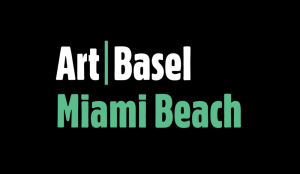
ART BASEL REVEALS 277 PREMIER INTERNATIONAL GALLERIES FOR ITS AMERCIAS FAIR
September 12, 2023
Art Basel Miami Beach has named the 277 galleries participating in its 2023 iteration, slated to run December 8–10, with preview days on December 6–7. This year’s iteration will focus on the Latin American and Caribbean diasporic scenes, and will feature galleries from Egypt, Iceland, the Philippines, and Poland. The fair is led by Vincenzo de Bellis, Art Basel’s director of fairs and exhibition platforms.
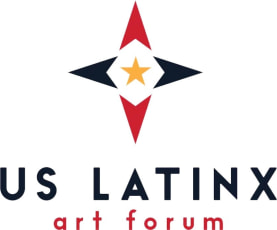
EDRA SOTO AWARDED U.S. LATINX ART FORUM ARTIST FELLOWSHIP
Our country’s Latinx artists—creatives of Latin American or Caribbean descent who live and work in the US—have made significant and vital contributions to American culture. Yet these artists have lacked visibility and received little of the philanthropic or institutional support necessary to secure their place in the story of American art. Designed to address this systemic and longstanding lack of support, and now in its third year, the Latinx Artist Fellowship is awarding $50,000 each to a multigenerational cohort of 15 Latinx visual artists each year for an initial commitment of five years. Administered by the US Latinx Art Forum in collaboration with the New York Foundation for the Arts and supported by the Mellon Foundation and the Ford Foundation, this award is the first significant prize of its kind and celebrates the plurality and diversity of Latinx artists and aesthetics.

THE ALFRED R. SHANDS III AND MARY N. SHANDS MASTER SERIES: VIAN SORA
August 13, 2023
The gallery is pleased to announce that Vian Sora will be in conversation with Contemporary Curator Tyler Blackwell at the Speed Art Museum as a part of their The Alfred R. Shands III and Mary N. Shands Masters Series. The event will take place on August 13, 2023, 2:00 pm to 3:00 pm EST.

ARTISTS IN DIALOGUE: DELITA MARTIN & EVITA TEZENO
August 10, 2023
The gallery is pleased to announce that Evita Tezeno will be in conversation with Delita Martin at the Museum of Fine Arts, Houston as a part of their Artists in Dialogue Series. The event will take place on August 10, 2023, 6:30 to 7:30 pm CST. Contemporary artists Delita Martin and Evita Tezeno talk about their backgrounds and the unifying themes in their work.
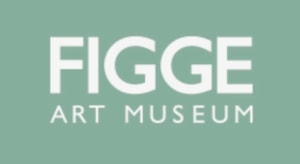
THE FIGGE ART MUSEUM ACQUIRES PAINTING BY EVITA TEZENO
August 1, 2023
Luis De Jesus Los Angeles is pleased to announce the acquisition of Evita Tezeno's Standing on the Promises, 2022 by the Figge Art Museum. The gallery extends its most sincere thanks to Andrew Wallace, Director of Collections and Exhibitions; The Board of Trustees' Acquisition Committee; and Dr. Randy Lewis, Davenport, IA.
Standing on the Promises takes its inspiration from one of Tezeno's favorite gospel hymns, “Standing on the Promises of God,” written by Russell Kelso Carter in 1886.
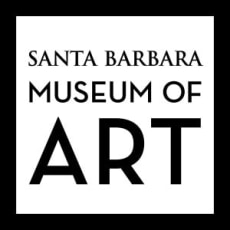
THE SANTA BARBARA MUSEUM OF ART ACQUIRES VIAN SORA'S FOREST REMAINS, I
July 5, 2023
Luis De Jesus Los Angeles is thrilled to announce the acquisition of Vian Sora's painting Forest Remains, I, by the Santa Barbara Museum of Art. The gallery offers its deep appreciation to James Glisson, PhD, Curator of Contemporary Art, Santa Barbara Museum of Art; Eik Kahng, Registrar; and Nicolas Mutton, Chair, Basil Alkazzi, who underwrote the acquisition, and the entire SBMA Board of Trustees.
Forest Remains, I, further reflects upon the distortion and confusion that immigrants face when attempting to resettle, seeking to find clarity amongst the metaphorical forests they journey through.
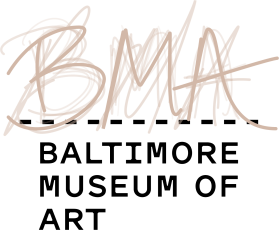
THE BALTIMORE MUSEUM OF ART ACQUIRES VIAN SORA'S LAST SOUND
July 5, 2023
Luis De Jesus Los Angeles is thrilled to announce the acquisition of Vian Sora's painting Last Sound, by the Baltimore Museum of Art. The gallery extends its most sincere gratitude to Jessica Bell Brown, Curator and Head, Department of Contemporary Art, Baltimore Museum of Art; Asma Naeem, The Dorothy Wagner Wallis Director and Chief Curator; Cynthia Hodge-Thorne, Meyerhoff-Becker Curatorial Fellow; and Helene Grabow, Senior Collections Development Manager; Shelby Merritt, Associate Registrar; as well as the Contemporary Accessions Committee and the Board of Trustees.
Last Sound, a large mixed media painting on canvas, is a response to the displacement and oppression that migrants and immigrants confront — the hardships endured, their constant refusal, lost identity, and the last familiar sound that keeps resonating in their life.
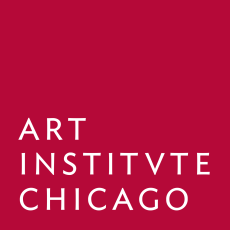
THE ART INSTITUTE OF CHICAGO ACQUIRES KEN GONZALES DAY'S ERASED LYNCHINGS I, 2006
Luis De Jesus Los Angeles is very pleased to announce The Art Institute of Chicago's accession of Ken Gonzales-Day's Erased Lynchings I, 2006, into the permanent collection. The Erased Lynchings series (2002-ongoing) began with a focus on the history of lynching in California and has brought new scholarship and awareness to the history of lynching nationwide. The research specifically expanded the number of known cases in California, and the work now includes the lynching of African Americans, Latinos, Asians, Native Americans, and Jews, in the American West and nationwide.

AARON MAIER-CARRETERO AWARDED ELIZABETH GREENSHIELDS FOUNDATION SPRING 2023 GRANTEE
June 20, 2023
Luis De Jesus Los Angeles is proud to announce Aaron Maier-Carretero as a recipient of The Elizabeth Greenshields Foundation. The foundation is dedicated to helping artist and students pursue the mastery of the traditional techniques and workmanship in painting and sculpture.

MONTALVO ARTS CENTER ANNOUNCES PHUNG HUYNH AS A 2023 LUCAS ARTIST FELLOW
Luis De Jesus Los Angeles is pleased to announce Phung Huynh as a 2023 Montavlo Arts Center artist fellow. Of 370 applicants, 65 artists—spanning careers from emerging to established—were awarded Lucas Artists Fellowships: 30 in the field of visual arts, 19 in literary arts, and 16 in music/composition and performing arts.
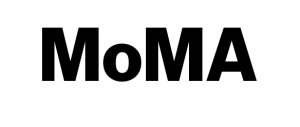
THE MUSEUM OF MODERN ART, NEW YORK ACQUIRES KEN GONZALES-DAY'S THE WONDER GAZE (ST. JAMES PARK)
Luis De Jesus Los Angeles is proud to announce the Museum of Modern Art's accession of The Wonder Gaze (St. James Park), 2006, by Ken Gonzales-Day, into the permanent collection. The Wonder Gaze (St. James Park) is one of the most recognized photographic works by Ken Gonzales-Day. It depicts the lynching of Thomas Thurmond and John Holmes in St. James Park, San Jose, CA, in 1933. It is part of the Erased Lynchings series (2002-ongoing), which began with a focus on the history of lynching in California and has brought new scholarship and awareness to the history of lynching nationwide.
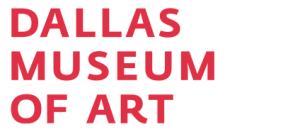
THE DALLAS MUSEUM OF ART ACQUIRES PHUNG HUYNH'S ARN CHORN-POND
Luis De Jesus is proud to announce the Museum of Modern Art's accession of Arn Chorn-Pond, 2023, by Phung Huynh, into the permanent collection. This graphite drawing on a pink donut box depicts Arn Chorn-Pond, a Cambodian musician, human rights activist, and a survivor of the Khmer Rouge regime. He is an advocate for the healing and transformative power of the arts, especially music. Arn Chorn-Pond is one of nine works in Huynh's sold out series, From the Donut Box, informed by her experience as a refugee of Cambodian and Chinese descent from vietnam.
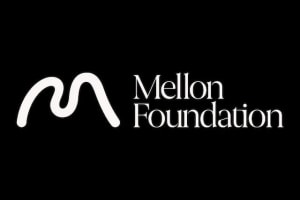
US LATINX ART FORUM ANNOUNCES NEW LATINX ARTIST FELLOWS
The US Latinx Art Forum (USLAF) today announced the newest cohort of the Latinx Artist Fellowship. In its third year, the fellowship annually recognizes 15 of the most compelling Latinx visual artists working in the United States today and aims to address a systemic lack of support, visibility, and patronage of Latinx visual artists—individuals of Latin American or Caribbean descent, born or long-living in the United States.
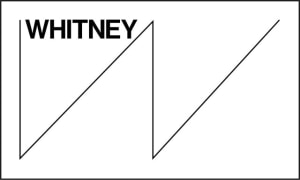
WHITNEY MUSEUM OF AMERICAN ART'S ACQUIRES GRAFT, 2022, BY EDRA SOTO
Luis De Jesus Los Angeles is proud to announce the Whitney Museum of American Art's acquisition of GRAFT, 2022, by Edra Soto. GRAFT was featured in the museum's landmark exhibition “no existe un mundo poshuracán: Puerto Rican Art in the Wake of Hurricane Maria," organized by the DeMartini Family Senior Curator, Marcela Guerrero. The gallery wishes to thank the museum and everyone who made this acquisition possible.
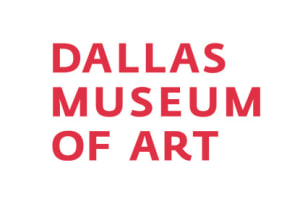
KARLA DIAZ AWARDED THE DALLAS MUSEUM OF ART ACQUISITION PRIZE
April 20, 2023
Luis De Jesus Los Angeles is delighted to announce that Karla Diaz has been awarded the Dallas Museum of Art Acquisition Prize for her watercolor and ink painting Torera (Bullfighter), 2023. We are honored to be the beneficiary of this purchase prize which is made possible by the Dallas Art Fair Foundation Acquisition Program.

EVITA TEZENO NAMED A FELLOW OF THE 2023 JOHN SIMON GUGGENHEIM MEMORIAL FOUNDATION
JOHN SIMON GUGGENHEIM MEMORIAL FOUNDATION
Luis De Jesus Los Angeles is proud to announce that Dallas-based artist Evita Tezeno has been named a 2023 Fellow of the John Simon Guggenheim Memorial Foundation. Her fellowship is supported in part by the Joel Conarroe Fund, named for the former President of the Foundation who was a Guggenheim Fellow in 1977.
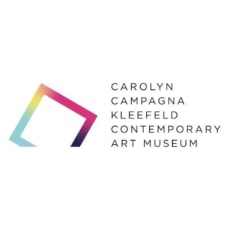
CAROLYN CAMPAGNA KLEEFELD CONTEMPORARY ART MUSEUM ACQUIRES JUNE EDMONDS' "SILENCE"
Luis De Jesus Los Angeles is delighted to announce the acquisition of June Edmond's Silence. June Edmonds’s Flag series explores the American flag as a malleable symbol of ideals and promises, and creates space for new symbols of identity and inclusivity. The idea for the series was prompted by several personal experiences she had involving the American and Confederate flags, and the rise of the Far Right during the 2016 presidential election. Silence (and a smaller version titled Innocence) is the only painting in the series that doesn’t follow the classic configuration of the Stars and Stripes. Instead, the composition of Silence bears a striking resemblance to the Confederate banner. Edmond's states: "Silence — the telling of lies, conscious and unconscious ignorance, and the benefit of presumed innocence — is what I am addressing in this flag painting."
We extend our sincere gratitude to Paul Baker Prindle, director of the Museum.

PHÙNG HUYNH NAMED 2023 HONOREE FOR WOMEN OF IMPACT AWARDS IN THE ARTS
March 16, 2023
Luis De Jesus Los Angeles is pleased to announce that Phung Huyn has been named the 2023 honoree in art for the Women of Impact Awards.
The Women of Impact Awards was created in honor of Women’s History Month to spotlight the efforts of our extraordinary women in the 77th Assembly District.
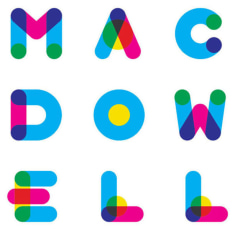
JUNE EDMONDS AWARDED MACDOWELL SPRING-SUMMER FELLOWSHIP
February 14, 2023
Luis De Jesus Los Angeles is pleased to announce June Edmonds was awarded a MacDowell spring-summer fellowship.
MacDowell will welcome 142 artists from 23 states, Washington D.C., and 11 countries for spring and summer residencies. These fellowships at the nation’s first artist residency program in Peterborough were granted from a pool of 1,822 applications from 54 countries and every state except Hawaii. Fifty-two percent of the incoming artists-in-residence self-identify as artists of color and 76 percent will be first-time fellows.
HECTOR DIONICIO MENDOZA AWARDED LOUIS COMFORT TIFFANY FOUNDATION 2022 BIENNIAL GRANT
January 28, 2023
Luis De Jesus Los Angeles is pleased to announce Hector Dionicio Mendoza as a recipient of the Louis Comfort Tiffany Foundation 2022 Biennial Grant.
Twenty artists working in painting, drawing, sculpture, photography, video, craft, and new media are awarded $20,000 USD each in unrestricted grants. Established in 1918 by Louis Comfort Tiffany, son of the founder of Tiffany & Company, the Foundation remains one of the largest single sources of monetary grants to artists working in America today.

EDRA SOTO AWRADED LUCAS ARTISTS FELLOW AT THE MONTALVO ARTS CENTER
Luis De Jesus Los Angeles is proud to announce Edra Soto's upcoming Lucas Artists Fellow Residency at the Montalvo Arts Center. The Sally and Don Lucas Artists Residency Program (LAP) is a creative incubator and cultural producer dedicated to investing in artists and their work. We support visual artists, composers, writers, performers, scholars, and others from around the world to undertake critical investigations of contemporary issues, and to create and present new and experimental works.
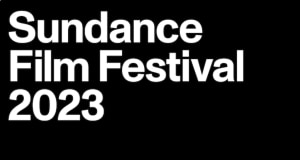
ZACKARY DRUCKER WINNER OF 2023 SUNDANCE FILM FESTIVAL U.S. DOCUMENTARY SPECIAL JURY AWARD: CLARITY OF VISION FOR FILM "THE STROLL"
January 28, 2023
Luis De Jesus Los Angeles is please to announce Zackary Drucker winner of 2023 sundance film festival U.S. Documentary Special Jury Award: Clarity of Vision for Film "The Stroll". This is the definitive history of New York City’s Meatpacking District, told by the transgender women of color who created its history. “The Stroll” was where trans women of color, shunned out of the workforce, turned to for a means of survival. Women of the Stroll past and present are brought together by co-director Kristen Lovell (for whom this is a stunning directorial debut), who worked alongside them for a decade, and Zackary Drucker (Transparent producer and The Lady and the Dale director).
EDRA SOTO WINNER OF 2022 REE KANEKO AWARD
January 26, 2023
Luis De Jesus Los Angeles is proud to announce that gallery artist Edra Soto has been awarded the Bemis Center's 2022 Ree Kaneko Award. This annual award is bestowed to artists that have participated in Bemis's exhibition or residency programs and is named in honor of Ree Kaneko, Bemis Center co-founder, first Executive Director, and Board Member Emerita.
The Bemis Center's Ree Kaneko Award was created to award $25,000 unrestricted, by nomination to an alum of the program to provide financial support to increase the capacity of an artists practice. There will be a conversation held with Edra Soto: March 9, 6–7pm
FOUR WORKS BY VIAN SORA ACQUIRED BY THE GRINNELL COLLEGE MUSEUM OF ART, GRINNELL, IOWA
Luis De Jesus Los Angeles is pleased to announce that Grinnell College Museum of Art, Grinnell, Iowa recently acquired four works by artist Vian Sora. The works included Eden I,2022, Eden II, 2022, River Bed, 2022, and Thirst, 2021. Sora's work utilizes a synthesis of styles and iconography taken from both her native, modern and ancient Iraq and adopted cultures, along with a variety of techniques, Vian Sora’s mixed media paintings embody imagery that suggests the struggle of the individual in the face of personal and social upheaval, often employing androgynous figures that transmute into expressionist abstraction.
GABRIEL SANCHEZ FEATURED ON COVER OF NEW AMERICAN PAINTINGS ARTIST OF THE WEST COMPETITION
Luis De Jesus Los Angeles is pleased to announce Gabriel Sanchez has been featured on the cover of New American Paintings Artist of the West Competition. Sanchez's recent paintings explore how proximity and union, ever-present aspects of Cuban society, inform notions of solitude and intimacy. Sanchez’s works focus on Cuban current events and politics as seen through the lens of portraiture.
KEN GONZALES-DAY'S "THE WONDER GAZE (ST. JAMES PARK)" ACQUIRED BY THE BLOCK MUSEUM OF ART AT NORTHWESTERN UNIVERSITY, EVANSTON, IL
December 9, 2022
Luis De Jesus Los Angeles is pleased to announce that Ken Gonzales-Day's The Wonder Gaze (St. James Park) was recently acquired by the Block Museum of Art at Northwestern University, Evanston. The Wonder Gaze (St. James Park) is one work from Ken Gonzales-Day's ongoing Erased Lynchings series which he began in 2002. The series seeks to reveal that racially motivated lynching and vigilantism was a more widespread practice in the American West than was believed, and that in California, the majority of lynchings were perpetrated against Latinos, Native Americans, and Asian Americans; and that more Latinos were lynched in California than were persons of any other race or ethnicity. It is Gonzales-Day’s continual engagement with history and his interest in peeling back the layers that makes his work so powerful and continuously relevant.
ANTONIA WRIGHT & RUBEN MILLARES WIN $25,000 JUROR’S CHOICE AWARD FOR LARGEST-EVER NO VACANCY, MIAMI BEACH; MARITZA CANECA WINS $10,000 GMCVB’S PEOPLE’S CHOICE AWARD
December 8, 2022
Luis De Jesus Los Angeles is pleased to announce Antonia Wright & Ruben Millares have been awarded the Juror's Choice Award for the 2022 edition of No Vacancy. The duo have been awarded a prize of $25,000 for their presentation of Patria y Cida at the Faena Hotel Miami Beach. No Vacancy is a juried art competition that celebrates artists, provokes critical discourse, and invites the public to experience Miami Beach’s famed hotels as destination art spaces. Artists were drawn from a call for submissions and selected by representatives from the City of Miami Beach Art in Public Places Committee, Cultural Arts Council (CAC) and MBVCA. For the second edition of No Vacancy, $35,000 in prizes were awarded, including the $10,000 Public Prize by the GMCVB and the $25,000 Juror Prize awarded by a panel of art experts.
HUGO CROSTHWAITE AWARDED A SMITHSONIAN NATIONAL PORTRAIT GALLERY COMMISSION TO CREATE A PORTRAIT OF 2022 HONOREE DR. ANTHONY S. FAUCI
November 10, 2022 - October 22, 2023
The gallery is pleased to announce that Hugo Crosthwaite has been chosen to commisson a portrait of public health expert Anthony S. Fauci for Portrait of a Nation 2022 Honoree to be exhibited in the Smithsonian National Portrait Gallery in Washington, D.C. Crosthwaite’s portrait will be debuted alongside new commissions by Kenturah Davis, David Hockney, Kadir Nelson, Toyin Ojih Odutola, Robert Pruitt, and Ruven Afanador. Crosthwaite's innovative piece presents a stop-motion animated piece of Dr. Fauci and will be accompanied by seven drawings.
LAURA KARETZKY SELECTED AS A FINALIST FOR THE 2023 BENNETT PRIZE AND RISING VOICES 3 EXHIBITION
November 29, 2022
Luis De Jesus Los Angeles is proud ot announce that Laura Karetzky is a Finalist for the 2023 Bennett Prize and Rising Voices 3 exhibition. The Bennett Prize was founded by art collectors, curators, and philanthropists Steven Alan Bennett and Dr. Elaine Melotti Schmidt. It seeks to propel the careers of women figurative realist painters who have not yet realized full professional recognition, thereby empowering new artists as well as those who have painted for many years. As a finalist, Karetzky will be in consideration for the $50,000 Bennett Prize and the runner up prize of $10,000. The opening of the exhibition and announcement of the winner of the Bennett Prize will take place at the Muskegon Museum of Art on May 18, 2023, in Muskegon, MI.
PHUNG HUYNH AWARDED 2022 CALIFORNIA COMMUNITY FOUNDATION FELLOWSHIP FOR VISUAL ARTIST FELLOWS
August 31, 2022
Luis De Jesus Los Angeles is proud to announce that Phung Huynh has been awarded a 2022 California Community Foundation Fellowship for Visual Artist Fellows. The CCF fellowships are one of the most "prestigious arts fellowships in the region, which helps artists build successful, sustainable careers that support the thriving Los Angeles arts scene."
JUNE EDMONDS AWARDED 2022 CALIFORNIA COMMUNITY FOUNDATION FELLOWSHIP FOR VISUAL ARTIST FELLOWS
August 31, 2022
Luis De Jesus Los Angeles is proud to announce that June Edmonds has been awarded a 2022 California Community Foundation Fellowship for Visual Artist Fellows. The CCF fellowships are one of the most "prestigious arts fellowships in the region, which helps artists build successful, sustainable careers that support the thriving Los Angeles arts scene."
KEN GONZALES-DAY TO PARTICIPATE IN "AT HOME: ARTISTS IN CONVERSATION" WITH LACMA CURATOR RITA GONZALEZ
PRESENTED BY THE YALE CENTER FOR BRITISH ART
REGISTRATION REQUIRED | Wednesday, October 19, 2022 | 1:00-2:00 PM |
The gallery is pleased to announce Ken Gonzales-Day's participation in "At Home: Artists in Conversation" with Rita Gonzalez, Terri and Michael Smooke Curator and Department Head of Contemporary Art at the Los Angeles County Museum of Art. Presented by the the Yale Center for British Art, at home: Artists in Conversation brings together curators and artists to discuss various artistic practices and insights into their work.
KEN GONZALES-DAY TO PARTICIPATE IN "LYNCHING IN THE WEST: DOWNTOWN LOS ANGELES WALKING TOUR"
PRESENTED BY BRIDGE PROJECTS
REGISTRATION REQUIRED | Saturday, October 29, 2022 | 10:00 – 11:30 AM
The gallery is pleased to announce that Ken Gonzales-Day will lead a walking tour around historical sites in downtown Los Angeles to that expands on the history of lynching in California. Organized by Bridge Projects, the in person event will take place on Saturday, October 29, 2022 beginning at Union Station at 10 AM. The walking tour will revisit places and events made infamous in the first decades of Los Angeles – a period that was colored by great social, economic, and cultural unrest.
LIA HALLORAN TO PARTICIPATE IN "COSMIC EXPLORATIONS: AT THE INTERSECTION OF SCIENCE, SPACE, ART, AND CULTURE:" THE 11TH CONFERENCE ON THE INSPIRATION OF ASTRONOMICAL PHENOMENA
CALIFORNIA INSTITUTE OF TECHNOLOGY, PASADENA, CA
REGISTRATION REQUIRED | Friday, September 23, 2022
Luis De Jesus Los Angeles is pleased to announce that Lia Halloran will be speaking with Kip Thorne in a discussion, "Poetry & Painting: The Warped Side of our Universe" on Friday September 23, 2022. The talk will run from 8:30-9:15 AM and is part of the 11th Conference on the Inspiration of Astronomical Phenomena Programming.
GALLERY WEEKEND LOS ANGELES: JOHN BROOKS + JONATHAN VANDYKE
PRESENTED BY LUIS DE JESUS LOS ANGELES
Saturday, July 30 at 1:00 PM + 4:00 PM
Luis De Jesus Los Angeles is pleased to participate in the second edition of Gallery Weekend Los Angeles, presented by the Gallery Association Los Angeles (GALA) from July 27-30, 2022. In conjunction with their current solo exhibitions, the gallery will present John Brooks and Jonathan VanDyke in back to back readings on Saturday, July 30th as part of readings on Saturday, July 30th as part of our Gallery Weekend LA programme. We will begin with John Brooks at 1pm followed immediately by Jonathan Van Dyke. A second presentation will be held at 4pm.
LAURA KRIFKA ARTIST TALK AND EXHIBITION WALK-THROUGH
RSVP REQUIRED
Saturday, May 14, 2022 at 2:00 PM
Luis De Jesus Los Angeles is very pleased to invite you to an artist talk and exhibition walk-through with Laura Krifka on Saturday, May 14th, at 2:00 p.m. This talk is presented in conjunction with "Still Point," the artist’s second solo exhibition with the gallery, on view through May 28, 2022. This is an in person event. RSVP: gallery@luisdejesus.com.
LIA HALLORAN INSTALLATION AT THE EXPLORATORIUM
DOUBLE HORIZON
May 13 – August 7, 2022
Luis De Jesus Los Angeles is pleased to announce that Lia Halloran's Double Horizon will be featured at the Exploratorium. Double Horizon is an immersive three-screen video installation that envelopes the viewer in artist Lia Halloran’s portrait of Los Angeles. The installation will be on view through August 7, 2022.
THE PHILLIPS COLLECTION ACQUIRES FEDERICO SOLMI'S "THE CHARMING STATESMAN"
April 20, 2022
Luis De Jesus Los Angeles is very pleased to announce that Federico Solmi's painting titled The Chaming Statesman (2019) has been acquired by the Phillips Collection in Washington DC. The drawing will be exhibition among other recent acquisitions until May 31st.
JUNE EDMONDS AWARDED 2022 GUGGENHEIM FELLOWSHIP
April 8, 2022
Luis De Jesus Los Angeles is proud to announce that June Edmonds has been awarded a 2022 Guggenheim Foundation Fellowship in Fine Arts by the John Simon Guggenheim Foundation. Guggenheim Fellowships are grants that have been awarded annually since 1925 by the John Simon Guggenheim Memorial Foundation to those "who have demonstrated exceptional capacity for productive scholarship or exceptional creative ability in the arts."
LAURA KARETZKY SELECTED AS A FINALIST IN THE 2022 OUTWIN BOOCHEVER PORTRAIT COMPETITION
"TOAST" WILL BE ON VIEW IN THE EXHIBITION THE OUTWIN 2022: AMERICAN PORTRAITURE TODAY AT THE SMITHSONIAN NATIONAL PORTRAIT GALLERY
April 30 - February 26, 2023
Luis De Jesus Los Angeles is pleased to announce that Laura Karetzky is a finalist in the 2022 Outwin Boochever Portrait Competition. The National Portrait Gallery’s triennial Outwin Boochever Portrait Competition celebrates excellence in the art of portraiture. The forty-two portraits were selected through an open call that garnered more than 2,700 entries from artists working across the United States and Puerto Rico. The portraits will be on view at the Smithsonian National Portrait Gallery through February 26, 2023.
LIA HALLORAN TO PARTICIPATE IN GROUP EXHIBITION AT THE UNIVERSITY OF LEEDS
SEEING STARS
April 27 – June 30, 2022
Luis De Jesus Los Angeles is pleased to announce that Lia Halloran will be participating in Seeing Stars, a group exhibition at the University of Leeds' Stanley & Audrey Burton Gallery. Guest curated by Hondartza Fraga, a visual artist living in Leeds, the exhibition shines a light on contemporary artists who use and challenge the newest technologies for space imaging in their art practice. The artists in this exhibition bring the human sense of wonder back into sharp focus – blurring the line between fact and fiction.
KEN GONZALES-DAY TO GIVE LECTURE AT THE ANDERSON RANCH ARTS CENTER
PRESENTED BY THE ANDERSON RANCH ARTS CENTER
Sunday, June 12 | 7:00 PM
The gallery is pleased to announce that Ken Gonzales-Day will be giving a lecture at the Anderson Ranch Arts Center in Colorado with guest faculty member Benjamin Timpson. This free in person event will take place on Sunday, June 12 from 7–8 PM. Registration required.
AARON MAIER-CARRETERO & CURATOR ALMA RUIZ IN CONVERSATION AT LUIS DE JESUS LOS ANGELES
REFRESHMENTS SERVED | LIMITED SEATING | RSVP REQUIRED
Saturday, April 2, 2022 at 2:00 PM
Luis De Jesus Los Angeles cordially invites you to attend Alma Ruiz and Aaron Maier-Carretero in Conversation, to be held on Saturday, April 2nd, at 2:00 PM. This talk is presented in conjunction with the artist’s first solo exhibition with the gallery, currently on view through April 9, 2022. This is an in-person event. Seating is limited and reservations are required.
ANTONIA WRIGHT TO PARTICIPATE IN GROUP EXHIBITION AT THE CONTEMPORARY ARTS CENTER, NEW ORLEANS
#FAIL
March 12 – June 19, 2022
The gallery is pleased to announce that Antonia Wright will participate in the group show, #fail, at the Contemporary Arts Center, New Orleans. The multimedia group exhibition, presented by the Contemporary Arts Center, New Orleans and Spinello Projects, brings together works by artists that expose the systemic failures facing our world. #fail explores a world in crisis and it is treated as social and poetic materials. Through a multidisciplinary presentation, the artists express existence as a failure worth narrating.
KEN GONZALES-DAY TO PARTICIPATE IN "THE NARRATIVE ARC OF LATINX PHOTOGRAPHY" PANEL
PRESENTED BY APERTURE AND THE LUCAS MUSEUM OF NARRATIVE ART
Zoom | Thursday, February 24, 2022 | 7:00 PM ET
The gallery is pleased to announce that Ken Gonzales-Day will be participating in the Aperture Conversations "The Narrative Arc of Latinx Photography." The event will begin with an introduction by Pilar Tompkins Rivas (guest editor of the “Latinx” issue of Aperture, and chief curator and deputy director of curatorial and collections at the Lucas Museum of Narrative Art, Los Angeles) and will also feature artists Sofía Córdova and Perla de León moderated by professor and writer Jesse Alemán. The event will take place online via Zoom on Thursday February 24, 2022 at 7:00 pm ET.
RODRIGO VALENZUELA & KEN GONZALES-DAY ARTIST TALK
REFRESHMENTS SERVED | RSVP ENCOURAGED
Saturday, February 19, 2022 at 10:00 AM
Luis De Jesus Los Angeles cordially invites you to attend a Frieze Los Angeles Special Event featuring back-to-back Artist Talks with Rodrigo Valenzuela and Ken Gonzales-Day, on Saturday, February 19th, from 10 to 11 AM. The talks will be held in person at the gallery in Downtown LA, and are presented in conjunction with the artists current solo exhibitions: Rodrigo Valenzuela: New Works for a Post-Worker's World and Ken Gonzales-Day: Another Land. Refreshments will be served. Free admission; reservations are not required, but encourage. Masks will be required for this indoor event.
CARLA JAY HARRIS TO PARTICIPATE IN GROUP EXHIBITION AT THE SPARTANBURG ART MUSEUM
BLACK ANATOMY
February 17 – June 30, 2022
The gallery is pleased to announce that Carla Jay Harris will participate in the group show, black anatomy, at the Spartanburg Art Museum in South Carolina. This dynamic exhibition features artists who bring intimate and charged bodies of work that represent their present-day voices while simultaneously keeping a toe dipped in the waters of their collective past experiences. Sculptures, installations, paintings, and drawings illustrate their shared understanding of the Black experience in contemporary culture and reveal work that unfolds in tones of universal truths.
KEN GONZALES-DAY TO PARTICIPATE IN GROUP EXHIBITION AT THE BLOCK MUSEUM OF ART
A SITE OF STRUGGLE: AMERICAN ART AGAINST ANTI-BLACK VIOLENCE
January 26 – July 10, 2022
Luis De Jesus Los Angeles is pleased to announce that Ken Gonzales-Day will be participating in a group exhibition, A Site of Struggle: American Art Against Anti-Black Violence, at Northwestern University's Block Museum of Art. This exhibition explores how artists have engaged with the reality of anti-Black violence and its accompanying challenges of representation in the United States over a 100 + year period.
CARLA JAY HARRIS TO PARTICIPATE IN GROUP EXHIBITION AT LOS ANGELES UNION STATION
WE ARE...PORTRAITS OF METRO RIDERS BY LOCAL ARTISTS
January 1 – December 31, 2022
Luis De Jesus Los Angeles is pleased to announce that Carla Jay Harris is participating in a group show at Los Angeles Union Station presented by Metro Los Angeles. Celebrating the diversity of Los Angeles County and the community of transit riders, We Are…Portraits of Metro Riders by Local Artists is an exhibition that features portraits presented throughout the Metro system and online. Each rider portrait has a story that is personal and universal, intimate and immediate—a single story among the many stories of 840,000 daily riders on Metro, and each told by an artist with ties to neighborhoods served by Metro. This multi-site exhibition and series of events is presented by Metro Art in collaboration with Metro’s Office of Civil Rights, Racial Equity & Inclusion and Communications departments.
EDRA SOTO & JOEY LICO IN CONVERSATION AT LUIS DE JESUS LOS ANGELES
WINE & REFRESHMENTS | RSVP ENCOURAGED
Wednesday, December 15, 2021 at 7:00 PM
Luis De Jesus Los Angeles is very pleased to invite you to an exhibition walk-through and conversation between artist Edra Soto and curator Joey Lico in conjunction with EDRA SOTO: The Myth of Closure / El Mito del Cierre, on Wednesday, December 15 at 7:00 p.m. This is an in-person event. Reservations are not required, but encouraged.
JUNE EDMONDS SOLO EXHIBITION AT CAL POLY UNIVERSITY ART GALLERY
November 17 - December 10, 2021
Luis De Jesus Los Angeles is pleased to announce that June Edmonds will be having a solo exhibition at Cal Poly University San Luis Obispo. The exhibition will take place from November 17 through December 10, 2021.
KEN GONZALES-DAY FEATURED IN UPCOMING LECTURE, "THE POETICS OF ART AND INTERVENTION"
PRESENTED BY THE GETTY
Wednesday, November 17, 2021
The gallery is pleased to announce that Ken Gonzales-Day will be featured in an upcoming lecture with Getty curator LeRonn Brooks, Claudia Rankine, Monica Youn, and Jess Row. The event will take via webinar on November 17, 2021 from 5:00-6:00 p.m. PST / 2:00-3:00 p.m. ET.
CROCKER ART MUSEUM ACQUIRES JUNE EDMONDS "STILL SAYING HER NAME"
November 6, 2021
Luis De Jesus Los Angeles is very pleased to announce that June Edmonds' painting Still Saying Her Name, 2020, has been accessioned into the collection of the Crocker Museum of Art in Sacramento, CA. We are grateful to Simon K. Chiu, Chair of the Collections and Acquisitions Committee, and Scott Shields, Associate Director and Chief Curator, for making this acquisition possible.
LIA HALLORAN FEATURED IN DEPARTURES
"SPACE: A LETTER FROM DEPARTURES EXPLORING THIS MONTH'S THEME"
October 19, 2021
I THINK ABOUT SPACE, and my place in it, obsessively. As a 26-year-old non-white woman, I aim to take up space, as the mantra goes, yet bump against the barriers of a world and a mind socialized against that. As a born-and-raised New Yorker, I’ve only ever known erratic stimulation from spaces: awe-inspiring one minute, horrifying the next. I now share space with someone I love. For many, it's an endlessly relatable experience in its contradictions, clothing-pile politics, and navigation. My side/your side. Please get away from me/please come closer. Who takes what call from where.
JUNE EDMONDS TO GIVE RUSSELL FOUNDATION LECTURE
PRESENTED BY UC SAN DIEGO VISUAL ARTS DEPARTMENT AND MUSEUM OF CONTEMPORARY ART SAN DIEGO
Wednesday, October 27, 2021
The gallery is pleased to announce that June Edmonds will be giving a Russell Foundation Lecture presented by the UC San Diego Visual Arts Department and the Museum of Contemporary Art San Diego. The event will take place via webinar on October 27, 2021 from 6:00-8:00 p.m. PST / 9:00-11:00 p.m. ET.
KEN GONZALES-DAY TO GIVE ARTIST LECTURE ON "ERASED LYNCHINGS"
PRESENTED BY USC FISHER MUSEUM OF ART
Thursday, October 21, 2021
The gallery is pleased to announce that Ken Gonzales-Day will be giving an artist lecture on his ongoing Erased Lynchings series at the USC Fisher Museum of Art. The event will take place on Thursday October 21, 2021 from 2:00pm to 3:00pm
ARTIST TALK: JUNE EDMONDS, CARLA JAY HARRIS & KARLA DIAZ AT LUIS DE JESUS LOS ANGELES
MODERATED BY SHANA NYS DAMBROT | RSVP REQUIRED
Saturday, October 23, 2021 at 11:00 AM
Luis De Jesus Los Angeles is very pleased to invite you to an artist talk with June Edmonds, Carla Jay Harris, and Karla Diaz in conjunction with the artists' current solo exhibitions. The talk will be held on Saturday, October 23rd, from 11:00 am to 12:00 pm, followed by a Q&A. This is an in-person event. Seating is limited and reservations are required.
LIA HALLORAN SELECTED AS AN EXHIBITOR FOR THE LAX ART PROGRAM
LAX TERMINAL 1 | GATE 9 | POST-SECURITY
November 2021 – November 2022
Luis De Jesus Los Angeles is pleased to announce that Lia Halloran has been selected to partipate in the LAX Art Program. The LAX Art Program presents up to 20 exhibitions a year in collaboration with our partner, the City of Los Angeles’ Department of Cultural Affairs, to create vibrant public spaces at the airport.
JUNE EDMONDS 40 YEAR SURVEY AT LOYOLA MARYMOUNT UNIVERSITY LABAND ART GALLERY
FULL SPECTRUM
September 25, 2021 - February 20, 2022
Luis De Jesus Los Angeles is delighted to announce June Edmonds: Full Spectrum, a 40-year survey exhibition of Los Angeles-based artist June Edmonds, presented by Loyola Marymount University’s Laband Art Gallery from September 25 through December 11, 2021. The exhibition has been organized by Laband Art Gallery director and curator Karen Rapp.
CHRIS ENGMAN, KEN GONZALES-DAY, AND LIA HALLORAN TO PARTICIPATE IN GROUP EXHIBITION AT USC FISHER MUSEUM OF ART
ART AND HOPE AT THE END OF THE TUNNEL
September 10 - December 9, 2021
The gallery is please to announce that Chris Engman, Ken Gonzales-Day and Lia Halloran are participating in a group show, Art and Hope at the End of the Tunnel, at the USC Fisher Museum of Art in Los Angeles curated by art critic Edward Goldman. The concept of the exhibition emerged out of the bleakness and ambiguity in the initial stages of the Covid-19 Pandemic. Goldman, who was still able to visit artists in their studios, asked the question “how has this difficult time affected your art-making?” To his delight, the artists responded that it had allowed them to spend more time in their studio, creating art that had more focus and deeper meaning, giving Edward hope that there is light at the end of the tunnel.
JUNE EDMONDS INCLUDED IN GROUP EXHIBITION AT THE UNIVERSITY OF LA VERNE HARRIS ART GALLERY
NEW HISTORIES
September 7 - October 28, 2021
Luis De Jesus Los Angeles is pleased to announce June Edmond's partipation in a group show, New Histories, curated by Dion Johnson at the University of La Verne's Harris Art Gallery. With an idiosyncratic use of images, and signifiers, the exhibition offers access into rich visual worlds of personal reflection, layered symbolism, and prophetic vision. The exhibition will be on view from September 7 through October 28, 2021.
THE J. PAUL GETTY MUSEUM ACQUIRES WORK BY KEN GONZALES-DAY
August 30, 2021
Luis De Jesus Los Angeles is very pleased to announce the accession of six photographs by Ken Gonzales-Day (American, 1964) into the collection of The J. Paul Getty Museum in Los Angeles, California. This significant group of works includes three photographs from the Searching for California Hang Trees series and three photographs from the Memento Mori series. The works were chosen by Paul Martineau, Curator of Photographs and Karen Hellman, Assistant Curator of Photographs, and made possible through the support of Dr. Timothy Potts, Maria Hummer-Tuttle and Robert Tuttle Director and the J. Paul Getty Trust.
MIDDLEBURY COLLEGE MUSEUM OF ART ACQUIRES WORK BY KEN GONZALES-DAY
August 30, 2021
Luis De Jesus Los Angeles is very pleased to announce the acquisition of Ken Gonzales-Day's Next morning when Jimmy woke, the cowboys were gone, Livermore, CA, 2003, by the Middlebury College Museum of Art in Middlebury, Vermont. The photograph will be included in Art & Protest: Artists as Agents of Social Change, on view from September 14 - December 12, 2021. The exhibition was curated by María Ramirez ’21 (2020–2021 Simonds Curatorial Intern) and Jason Vrooman, Ph.D, Chief Curator and Director of Engagement, Middlebury College Museum of Art. Art & Protest unites examples of socially engaged art—produced primarily in the United States but in a few instances around the world—from the 19th century to the present to showcase the artistic and ideological patterns that occur across different eras and social movements, and the aesthetic or conceptual strategies artists use to demonstrate the need for social change.
KEN GONZALES-DAY TO PARTICIPATE IN ARTIST TALK, "ART BREAK: PORTRAITURE"
PRESENTED BY THE GETTY
Friday, July 30, 2021
The gallery is pleased to announce that Ken Gonzales-Day will particpate in a discussion of ancient portraiture with Getty antiquities curator Jens Daehner. The event will take place via webinar on July 30, 2021 at 12:00 p.m. PST / 9:00 a.m. ET.
ZACKARY DRUCKER TO PARTICIPATE IN ARTIST PANEL
RADICAL TENDERNESS: TRANS FOR TRANS PORTRAITURE
Thursday, June 24, 2021
Radical Tenderness: Trans for Trans Portraiture, on view at the Alice Austen House Museum, highlights photographic work from four trans and non-binary artists whose portrait photography exudes tender intimacy and calls for a radical shift in visibility politics. Guest curator, Dr. Eliza Steinbock, will be joined by participating artist Zackary Drucker for a dialogue about the ways that trans and queer people use artwork to connect with one another, historically and today. The discussion will be preceded by a guided virtual tour of the exhibition by the Alice Austen House’s Executive Director Victoria Munro.
OOLITE ARTS ANNOUNCES 2021 ACQUISITION OF ANTONIA WRIGHT ARTWORK
PIECE TO BE DISPLAYED IN 2023 UPON THE OPENING OF NEW CAMPUS IN MIAMI
June 23, 2021
The gallery is pleased to announce that Antonia Wright will be one in seven artists to have artwork aquired as part of Oolite Art's renewed acquistions program. These pieces will be on display at the Oolite Arts' new campus in the City of Miami opening in 2023. The program was launced last year by Oolite's Board of Directors in an effort to ensure that more Miami artists are represented in major collections. A jury comprised of Miami and nationally-based curators, Tami Katz-Freiman, Omar Lopez-Chahoud and Larry Ossei-Mensah, helped select the diverse group of both established and emerging artists from a pool of more than 500 artists who are current residents or alumni of Oolite’s programs.
ANTONIA WRIGHT TO PARTICIPATE IN GROUP EXHIBITION AT OOLITE ARTS
"NATURAL TRANSCENDENCE" FEATURES WORK INSPIRED BY RE-INGEGRATING WITH NATURE DURING THE PANDEMIC.
June 15, 2021
The gallery is pleased to announce that Antonia Wright is participating in a group show, Natural Transcendance at the Oolite Arts in Miami. This group show presents works that reflect an ethereal sensibility toward nature manifested during the pandemic. It is a reaction to urban culture and the segregation of humanity from nature. The artists included in the show react to how the pandemic opened up opportunities for re-integragrion into nature; both literally and spirtually. Antonia Wright will be presenting a cyanotype portrait in this show, which blurs the lines between human and plant.
IN DIALOGUE: SMITHSONIAN OBJECTS AND SOCIAL JUSTICE
KEN GONZALES-DAY'S PHOTOGRAPH FEATURED IN TALK CO-HOSTED BY THE SMITHSONIAN AND THE NATIONAL MUSEUM OF NATURAL HISTORY
June 1, 2021
The gallery is pleased to announce that The Smithsonian and The National Museum of Natural History are co-hosting a talk about historical objects from their respective collections. This talk will focus on civic awareness about the conservation of art history and material culture. For the talk Ken Gonzales-Day’s photograph of Osage leader, Shonke Mon-thi^ and a 3D printed replica of a Tlingit clan crest hat will be starting point of the discussion. Both objects offer insight into the ways museums have used Indigenous objects to further colonialism as well as the Smithsonian’s recent efforts at cultural restoration.
KEN GONZALES-DAY TO PARTICIPATE IN TRAVELING GROUP EXHIBITION "MANY WESTS: ARTISTS SHAPE AN AMERICAN IDEA"
PRESENTED BY THE SMITHSONIAN AMERICAN ART MUSEUM AS PART OF THE ART BRIDGES INITIATIVE
2021 – 2024
Luis De Jesus Los Angeles is pleased to announce that Ken Gonzales-Day will be participating in Many Wests: Artists Shape an American Idea, a group exhibition that examines the perspectives of 48 modern and contemporary artists who offer a broader and more inclusive view of this region, which too often has been dominated by romanticized myths and Euro-American historical accounts. Many Wests features artwork from the permanent collections of the Smithsonian American Art Museum and four partner museums located in some of the fastest-growing cities and states in the western region of the United States. It is the culmination of a multi-year, joint curatorial initiative made possible by the Art Bridges Foundation. The collaborating partner museums are the Boise Art Museum in Idaho; the Jordan Schnitzer Museum of Art in Eugene, Oregon; the Utah Museum of Fine Arts in Salt Lake City; and the Whatcom Museum in Bellingham, Washington.
JIM ADAMS TO PARTICIPATE IN TRIENNIAL AT THE VANCOUVER ART GALLERY
VANCOUVER SPECIAL: DISORIENTATIONS AND ECHO | OPENING MAY 29, 2021
May 27, 2021
The gallery is pleased to announce that Jim Adams is presenting a series of paintings as part of Vancouver Special, the triennial presented at Vancouver Art Gallery. These paintings inspired by mythology and the black experience are portraits that merge storytelling of the ancient world and contemporary politics. Vancouver Special: Disorientations and Echo will be the second in what is envisioned as a series of exhibitions intended to provide an expansive look at contemporary art in the Greater Vancouver region.
KEN GONZALES-DAY PART OF GROUP EXHIBITION AT THE GETTY
PHOTO FLUX: UNSHUTTERING LA
May 25 - October 10, 2021
The gallery is pleased to announce that Ken Gonzales-Day will be participating in group exhibition, Photo Flux: UnShuttering LA at The Getty. The exhibit features photographs by 35 Los Angeles-based artists challenge ideals of beauty, representation, cultural capital, and objectivity. The artists in this exhibition, primarily people of color, have radically transformed photography to express their own aesthetics, identities, and narratives. Their work is foundational for an emerging generation of artists participating in the Getty Unshuttered program, which engages teens to seek photography as a platform to amplify social topics that resonate in their own lives. Guest curated by jill moniz.
FEDERICO SOLMI AND LAWRENCE WESCHLER IN CONVERSATION AT LUIS DE JESUS LOS ANGELES
RSVP REQUIRED: SATURDAY, MAY 22, 2021
5/13/2021
The gallery is pleased to announce that Federico Solmi will be in conversation with Lawrence Weschler on Saturday, May 22, at 11:00 a.m. in conjunction with Solmi's solo exhibition The Bacchanalian Ones. This conversation will be the gallery's first in-person event at the new 1110 Mateo Street location. Due to social distancing seating will be limited, so an RSVP will be required. Please RSVP at gallery@luisdejesus.com with the names of the people in your party.
KEN GONZALES-DAY'S WORK ON PUBLIC DISPLAY AT THE WENDE MUSEUM
TRANSFORMATIONS: Living Room -> Flea Market -> Museum -> Art
May 5, 2021
The gallery is pleased to announce that a photograph by Ken Gonzales-Day is now currently on display as part of group show TRANSFORMATIONS: Living Room -> Flea Market -> Museum -> Art at the Wende Museum. While the show opened October 4, 2020, the museum was closed to the public as part of an effort to protect the community from the COVID-19 epidemic. On May 1st, the Wende opened its collection and exhibitions back up to public viewing and the dates for the exhibition have been extended to October 24, 2021.
STANIAR GALLERY TO HOST VIRTUAL ARTIST TALK WITH KEN GONZALES-DAY
MAY 11, 2021 at 1:30 p.m. PST and 5:30 p.m. ET
April 30, 2021
The gallery is pleased to announce that Ken Gonzales-Day will be doing an artist talk and walk through of his solo show Profiled which is currently installed at the Staniar Gallery located on Washington & Lee's campus in Lexigton, Virginia. Due to COVID-19 the show is currently only accessable to W&L community members, however, a virtual walkthrough of the show is available to all on their website. Ken will be speaking about his work via zoom on May 11, 2021 at 1:30 p.m. PST/ 5:30 p.m. ET.
ZACKARY DRUCKER TO PARTICIPATE IN GROUP SHOW, "RADICAL TENDERNESS: TRANS FOR TRANS PORTRAITURE"
THE ALICE AUSTIN HOUSE MUSEUM
March 19- June 1, 2021
The gallery is pleased to announce that Zackary Drucker is participating in group show Radical Tenderness: Trans for Trans Portraiture. Timed to coincide with the International Day of Transgender Visibility on March 31, Radical Tenderness: Trans for Trans Portraiture highlights photographic work from four trans and non-binary artists whose portrait photography exudes tender intimacy and calls for a radical shift in visibility politics.
HUGO CROSTHWAITE RECEIVES SAN DIEGO PRIZE
March 13, 2021
We are delighted to announce that Hugo Crosthwaite was recently awarded the 2021 SD Art Prize. This year the prize focused on binational artists and he along with Beliz Iristay, PANCA Paola Villaseñor and Perry Vasquez were recognized for their tireless work to bring creativity and passion for their art to the San Diego Arts Community. These artists will be showcased in a group show opening in October. Founded and supported since 2006 by the San Diego Visual Arts Network, the SD Art Prize was conceived to promote visibility and public interest in talented local artists, and encourage community engagement and critical dialogue with San Diego’s contemporary art scene.
FEDERICO SOLMI TO PARTICIPATE IN GROUP SHOW AS PART OF THE CENTENNIAL EXHIBITION AT THE PHILLIPS COLLECTION
"SEEING DIFFERENTLY", MARCH 6 - SEPTEMBER 12, 2021
March 3, 2021
The gallery is excited to announce that Federico Solmi will be participating in the centennial exhibition of The Phillips Collection in Washington DC. His piece, The Great Farce, in a Portable Theater edition, will be part of this incredible show that celebrates the impact of artists from the 19th century to the present, including Simone Leigh, Sam Gilliam, Anselm Kiefer, Frank Stella and Howard Hodgkin, amongst other iconic historical works by Pablo Picasso, Amedeo Modigliani, Pierre Bonnard, Jackson Pollock, Willem De Kooning, and Jacob Lawrence.
LIA HALLORAN TO PARTICIPATE IN THE SAN FRANCISCO EXPLORATORIUM'S 'AFTER DARK' WEB SERIES
WILL AIR ON YOUTUBE AND FACEBOOK ON THURSDAY, MARCH 4, 2021 at 7:00 P.M. PST.
February 27, 2021
The gallery is pleased to announce that Lia Halloran will be a guest speaker for the San Francisco Exploratorium's After Dark Online: Art + Science digital programming. This event will be streamed via YouTube and Facebook on Thursday, March 4, 2021 at 7:00 p.m. PST.
Explore the intersections of art and science through the practice of individual artists who weave science, technology, and methods of discovery in their practices. The artistic process, much like the scientific process, is a form of inquiry vital to learning—an open-ended process of investigation, speculation, imagination, and experimentation. The Exploratorium highlights artists who clarify the reciprocal relationship between art and science and how it can inspire a deeper understanding of the world.
JUNE EDMONDS- VIRTUAL | EQUITY & REPRESENTATION IN CONTEMPORARY ART
A PANEL DISCUSSION FOR BLACK HISTORY MONTH
February 25, 2020
The gallery is pleased to announce that June Edmonds will be part of a panel, Virtual | Equity & Represenation in Contemporary Art- A Panel Discussion for Black History Month.
Over the course of time in America, large swaths of art history have been omitted, erased, or ignored. This absence has created a significant void in the narrative around how people of African descent and people of color have contributed to the artistic canon.
The impact presents significant disadvantages for artists of color. From artists that have difficulty gaining representation, to art historians overlooking Black and Brown artists’ contributions, to collectors that do not have access to works they would like to acquire, the playing field has never been level. Bias shows up in art schools, in institutions, in hiring practices, in the primary and secondary art market, and in the critical voices that influence all of the above.
Recent news of high-profile curatorial appointments are a move in the right direction. However, there is significant work that remains to be done. What kind of new and inclusive art world can we as art professionals help to create?
KEN GONZALES-DAY TO PARTICIPATE IN ARTIST TALK, "PHOTOGRAPHY AS REVOLUTIONARY AESTHETIC: AN LA ARTIST CONVERSATION"
HOSTED BY THE GETTY
February 17, 2021
Thursday, February 25, 2021, at 5 pm
ONLINE ONLY
Artists Todd Gray, Cauleen Smith, and Ken Gonzales-Day, each with distinct approaches to photo-based practices, discuss how they integrate concepts of identity and explore the tensions between refusal and inclusion. These artists are all native to California and their experiences as professors and artists reinforce the importance of place and community. Addressing themes from the forthcoming exhibition Photo Flux: Unshuttering LA, they’ll discuss their commitment to creating and expanding opportunities for emerging artists to stand, flex, and grow.
ANTONIA WRIGHT TO PRESENT INSTALLATION WORK AS PART OF ILLUMINATE CORAL GABLES
WORK WILL BE ON DISPLAY FROM FEBRUARY 12 - MARCH 14
February 12, 2021
The gallery is pleased to announce that Antonia Wright will be participating in an outdoor public art initiative in Coral Gables, Florida. Illuminate Coral Gables (ICG) focuses on the intentional use of light and technology to transform public art by day into magical and mysterious work at night. Her piece Yes/No uses barricades as a symbol of global climate of resistance. By lighting the barricades being used by the Illuminate exhibition throughout Coral Gables, her intention is to highlight the ubiquitous nature of these objects and their ambiguous intent to protect and control. By transforming a utilitarian object into a light work, the glowing objects will create a line throughout the streets of the city, evoking the divide and connection between bodies.
'WE ALL HAVE TO CREATE OUR OWN UNIVERSE.' DIRECTOR, PRODUCER AND ARTIST ZACKARY DRUCKER ON TELLING NUANCED TRANS STORIES
VIA TIME
February 8, 2021
The common thread that runs through the work of multimedia artist, director and producer Zackary Drucker is a commitment to telling stories of trans resilience, whether that’s through her photography, her work as a producer on the award-winning series Transparent, or as co-director of the new HBO docuseries The Lady and the Dale. “I never want to do the same thing twice. I am led by curiosity, by anything that I don’t understand,” Drucker says.
LIA HALLORAN'S ART FEATURED AS ILLUSTRATIONS IN JANNA LEVIN'S BLACK HOLE SURVIVAL GUIDE
February 5, 2021
The gallery is pleased to announce that Lia Halloran recently created the illustrations that went along with Janna Levin's book Black Hole Survival Guide.
"Janna Levin, as a professor of physics and astronomy at Columbia University, US, is the perfect tour guide to shepherd us through these topics in Black Hole Survival Guide. Over the course of only 160 pages – beautifully illustrated by Lia Halloran in a natural marriage of art and science – she takes us on a breakneck journey through the cosmos. We travel alongside a fellow astronaut named Alice, against whom we are compared and contrasted on various occasions, all in the spirit of learning and good natured competition."
- Emma Jones
EDRA SOTO'S EXHIBITION SPACE, THE FRANKLIN, TO RECEIVE GRANT MONEY AS PART OF HYDE PARK ART CENTER'S ANONYMOUS DONATION
February 2, 2021
In a suprise announcement from Hyde Park Art Center this last Monday it was made known that the center had received an anonymous donation of $560,000 to be distrubuted to artist run spaces and curatorial ventures in Chicago. With this grant money they have decided to award $8,000 to each of their participants of "Artist Run Chicago" and the rest will be disbursed into 20 additional grants. Amongst the grant reciepients is Edra Soto's space, The Franklin. The Franklin, which is run out of her home, is a beloved community-oriented show space in East Garfield Park.
KEN GONZALES-DAY AND LIA HALLORAN TO PARTICIPATE IN PACIFIC STANDARD TIME
January 28, 2021
In preparation for the upcoming Pacific Standard Time which focuses on the intersection of Art and Science, The Getty Foundation has recently awarded southern Californian institutions with the first round of grants. We are pleased to announce that two of our represented artists, Lia Halloran and Ken Gonzales-Day will be presenting works as part of the programing. This 3rd iteration of Pacific Standard Time will present an ambitious range of exhibitions and public programs that explores the connections between the visual arts and science, from prehistoric times to the present and across different cultures worldwide. From alchemy to anatomy, and from botanical art to augmented reality, art and science have shared moments of unity, conflict, and mutual insight. The next PST theme connects these moments in the past with the most pressing issues of today. By examining such critical issues as climate change and the future of artificial intelligence, PST will create an opportunity for civic dialogue around the urgent problems of our time.
HUGO CROSTHWAITE AND FEDERICO SOLMI'S WORK IN THE OUTWIN: AMERICAN PORTRAITURE
NOW ON VIEW AT D'AMOUR MUSEUM OF FINE ARTS
October 30, 2020 - April 4, 2021
The gallery is pleased to announce that Hugo Crosthwaite and Federico Solmi's work will be included in The Outwin: American Portraiture show, which has now traveled to D'amour Museum of Fine Arts. The Outwin: American Portraiture Today premiered at the Smithsonian’s National Portrait Gallery in the fall of 2019. Every three years, artists living and working in the United States are invited to submit one of their recent portraits to a panel of experts chosen by the museum in the call for the Outwin Boochever Portrait Competition. The works of nearly 50 finalists were selected from over 2,600 entries. For the first time in the triennial’s history, the museum specifically asked that submissions respond “to the current political and social context,” and this resulting presentation offers perspectives on some of today’s most pressing issues.
CARLA JAY HARRIS TO PARTICIPATE IN NORTON MUSEUM OF ART'S 80th ANNIVERSARY CELEBRATION AND AUCTION
January 19, 2021
The gallery is pleased to annouce that Carla Jay Harris' work will be part of the Norton Muesum of Art's 80th Anniversary Virtual Celebration. This year in order to celebrate the anniversary there will be two events, both online and accessible from home. On Febrauary 6, there will be a virtual celebration which will lightlight the museum and community and will feature artists, special guests, behind-the-scenes glimpses and more.
From January 25- February 8th, there will be an online auction that will be presented via Sothebys.com.
TRACTION: ART TALK WITH KEN GONZALES-DAY, JANUARY 14, 2021
PRESENTED BY INSTITUTE OF THE ARTS AND SCIENCES
January 12, 2021
The gallery is pleased to announce that Ken Gonzales-Day will be doing an online art talk in conjunction with The Insitute of the Arts and Sciences. Ken Gonzales-Day's interdisciplinary and conceptually grounded projects consider the history of photography, the construction of race, and the limits of representational systems ranging from the lynching photograph to museum display. For Traction: Art Talk, Gonzales-Day will be joined in conversation by Professor Karolina Karlic.
TRACTION: Art Talk with Ken Gonzales-Day and Karolina Karlic
January 14, 2021
5-6:30 p.m. PT
FIVE WORKS BY ERIK OLSON ACQUIRED BY THE ART GALLERY OF ALBERTA, CALGARY, CANADA
The gallery is pleased to announce that five paintings by Erik Olson were recently aquired by the Art Gallery of Alberta, Calgary, Canada. Working across different mediums, inclulding painting, sculpture, printmaking, and video, Erik Olson balances the scientific with the poetic in a dynamic visualization of his personal life. People, places and experiences become the subject of works that question our presumptions and our perception of the world. The figures and portraits that populate his canvases can be likened to characters in mystery plays, each flaunting their own constructed personas and exuberant color. Olson's playful curiosity often leads him to explore a variety of content across multiple scales: from the subconscious psychology of the sitter, to the windswept landscapes of America, to the scale of the planets and the vast cosmos.
EDRA SOTO'S "OPEN 24 HOURS" ACQUIRED BY DEPAUL ART MUSEUM AT DEPAUL UNIVERSITY, CHICAGO, IL
December 30, 2020
The gallery is pleased to announce that Edra Soto's Open 24 Hours (Albright-Knox ), was recently aquired by the DePaul Art Museum at DePaul University, Chicago. Soto, who recently participated in group show Unreachable Spring also became affliated with the gallery this year. Her work is an unrelenting love song of purserverance and community action through the challenges of socio-economic disparity and institutional racism. Her work Open 24 Hours was conceived on her daily dog walks through Chicago's East Garfield Park neighborhood where she would collect discarded liquor bottles that she would come across in vacant lots.
LIA HALLORAN NAMED A 2020- 2021 C.O.L.A. MASTER ART FELLOW
December 30, 2020
The gallery is very honored to announce that Lia Halloran has been named a 2020-2021 City of Los Angeles (C.O.L.A.) Individual Artist Fellow. As a C.O.L.A. Fellow, Halloran will be awarded a $10,000 grant to produce a new body of work which will be premiered by the City of Los Angeles in Spring 2021.
The 2020/21 C.O.L.A. Master Artist Fellows in literary, performing, and visual arts are: Neel Agrawal, Noel Alumit, Edgar Arceneaux, Maura Brewer, Nao Bustamante, Jedediah, Caesar, Neha Choksi, Michael Datcher, Sarah Elgart, Lia Halloran, Phung Huynh, Farrah Karapetian, Ruben Ochoa, and Umar Rashid.
BALTIMORE MUSEUM OF ART ACQUIRES FIVE PHOTOGRAPHS BY ZACKARY DRUCKER
December 16, 2020
The gallery is pleased to announce that the Baltimore Museum of Art has acquired five photographs by Zackary Drucker for it's permanet collection. The acquistion includeds three self-portraits from the "Relationship" series (produced in collaboration with Rhys Ernst from 2008- 2014 and debuted at the 2014 Whitney Biennial) and two photographs from the "Before and After" series (produced in collaboration with A. L. Steiner in 2010- 2011). The acquision is an outcome of BMA's "2020 Vision," a year of exhibitions and programs dedicated to the presentation of the achievements of female-identifying artists. 2020 Vision builds on the BMA's efforts over the last several years to expand its presentations of women artists and artists of color, and to more accurately reflect the community in which it lives.
CARLA JAY HARRIS'S "THE PATH " ACQUIRED BY CROCKER ART MUSEUM
December 16, 2020
The gallery is delighed to announce that the Crocker Art Museum has acquired Carla Jay Harris's The Path. The Path is one of more than 20 works in Carla Jay Harri's ongoing series Celestial Bodies which she began in 2018. In Celestial Bodies, Harris uses narratives of kinship, creation, and myth as tools to understand, undo and build anew. Cloaked in a firmament of stars and sumptuous red fabrics evocative of Mt. Olympus, the protagonists in Celestial Bodies exist in a contemplative and meditative dimension outside of our own reality- a utopian black society that we can look to for inspiration. Celestial Bodies began with black bodies floating ro flying through space, but has become grounded in the landscape- a transition and evolution that Harris relates to her own spiritual growth, becoming politically and socially reengaged as the foundations of her practice have been firmly established. In the tumult of 2020, creation has become a refuge for Harris.
ARTIST TALK: UNREACHABLE SPRING | SATURDAY, DEC. 19, 1:00 PM PST / 4:00 PM EST
MODERATED BY LINDSAY PRESTON ZAPPAS & LUIS DE JESUS
December 15, 2020
In conjunction with the final week of the Unreachable Spring, the gallery will host an artist talk on Zoom, December 19th, 1:00 PM PST / 4:00 PM EST moderated by Luis De Jesus and Lindsay Preston Zappas. This conversation will serve as a summation of the exhibition and provide insight and dialogue towards the socio-political atmophere in which these works were created. From isolation and death, to social activism, to personal responses to systemic oppression, we speak with our artists about making art during a year unlike any other.
FEDERICO SOLMI’S THE GREAT FARCE ACQUIRED BY THE PHILLIPS COLLECTION
Luis De Jesus Los Angeles is very pleased to announce that a seminal work by Federico Solmi (b. 1973) has been acquired by The Phillips Collection in Washington D.C. The Great Farce “Portable Theater” (2020) is a translation of Solmi’s most ambitious work to date, The Great Farce (2017-2019)—a monumental, multi-channel video installation that presents a sprawling send-up of empire-building as an enterprise. Past and present, history and amusement, reality and spectacle are conflated and distorted in The Great Farce—a scathing commentary on contemporary culture, where spectacle and celebrity may be distractions from sinister machinations and speed contributes to the blurring of myth and truth.
CARLA JAY HARRIS PARTICIPATES IN GROUP SHOW 'ARCHIVE MACHINES' AT LAMAG
July 30- December 31, 2020
The gallery is pleased to announce that Carla Jay Harris will be included in ARCHIVE MACHINES at Los Angeles Municiple Art Gallery. ARCHIVE MACHINES brings together recent works by Southern California artists that examine the archive as a conceptual vehicle to de-center singular narratives and encourage plural perspectives through the activities of revisioning, resisting, rewiring and relating. Carla Jay Harris' work explores the Black experience during Jim Crow. Central to the piece is a set of archival images sourced from Library of Congress.
KAMBUI OLUJIMI AND EDRA SOTO'S WORK SELECTED AS LEILANI LYNCH'S TOP PICKS FOR UNTITLED, ART MIAMI BEACH 2020
December 3, 2020
Leilani Lynch, curator at The Bass Museum of Art in Miami selected a group of works to highlight as part of the virtual UNTITLED, ART Miami Beach art fair. Within her selection both Edra Soto and Kambui Olujimi's installation works were featured.
KAMBUI OLUJIMI TO PARTICIPATE IN GROUP SHOW AT SECCA
DRAWN: CONCEPT & CRAFT
November 26, 2020
The gallery is pleased to announce that Kambui Olujimi has work part of a group show at Southeastern Center for Contemporary Art, SECCA. His piece, Under Tarped is part of a group exhibition, DRAWN: Concept & Craft. DRAWN brings together the diverse works of over 60 artists from around the world in an exhibition that provides a rare, revealing look into the creative process and artists' unique relationship with the art of drawing.
MUSÉE D'ART CONTEMPORAIN DE MONTRÉAL RECENTLY AQUIRED PIECE BY NICOLAS GRENIER
WORK WILL ALSO BE INCLUDED IN GROUP SHOW, DES HORIZONS D'ATTENTE
November 25, 2020
Luis De Jesus Los Angeles is pleased to announce that Nicolas Grenier's painting From Our Position, Yours is a Mystery (2017), was acquired by the Musée D'Art Contemporain De Montréal, Canada. This work will also be show in upcoming group show, Des Horizons D'Attente, which will showcase the museum's 21 new aquisitions.
NICOLAS GRENIER CURRENT FELLOW AND INTERNATIONAL RESIDENT AT ZK/U CENTER FOR ART AND URBANISTICS
November 25, 2020
The gallery is pleased to announce that Nicolas Grenier is a fellow and part of the international artist residency at ZK/U Center for Art and Urbanistics. While he is there he will be working on a project based on a system allowing a paradigm shift toward a post-capitalist economic culture. At this stage he is working with a programmer to build a non-monetary exchange mechanisms, while also designing the architecture for a common pool of resources that could be shared between people in a small group, a neighborhood or a city.
ARTIST TALK: EDRA SOTO SPEAKS WITH ART HISTORIAN, ROBERT R. SHANE
ZOOM CONVERSATION IN CONJUNCTION WITH THE CENTER FOR ART AND DESIGN AT COLLEGE OF SAINT ROSE
Thursday, November 19, 2020 at 4pm PT / 7pm ET via Zoom
The gallery is pleased to announce that Edra Soto will be in conversation with art historian and critic Robert R. Shane organized for the Center for Art and Design at College of Saint Rose, Albany, NY. The talk will focus on Soto's interdisciplinary work around themes of colonization, family, and social justice and will conclude with a poetry reading by Spencer Diaz Tootle.
KAMBUI OLUJIMI RECEIVES COLENE BROWN ART PRIZE
BRIC AWARDS $100,000 to 10 NEW YORK CITY-BASED ARTISTS
November 11, 2020
The gallery is pleased to announce that Kambui Olujimi has received a 2020 Colene Brown Art Prize, which awards $10,000 to New York-based artists via BRIC.
Now in its second year, the award is underwritten by artist and former BRIC Board Member Deborah Brown and her sister Ellen Brown in memory of their late mother, Colene Brown, and is funded through the Harold and Colene Brown Family Foundation.
Drawings from Kambui Olujimi's series When Monuments Fall is currently on view at the gallery as part of the group exhibition Unreachable Spring through December 19, 2020.
KEN GONZALES-DAY TO BE KEYNOTE SPEAKER AT UCLA
SPECULATIVE FORENSICS: THE 5th ANNUAL UCLA ART HISTORY GRAD SYMPOSIUM AND WORKSHOP
November 7, 2020
The gallery is pleased to announce that Ken Gonzales-Day will be a keynote speaker for the UCLA Art History Graduate Symoposium and Workshop. The annual UCLA Art History Graduate Student Symposium is the longest running symposium of its kind in North America. Initiated in 1965, the symposium provides a forum for graduate students to present original research in a scholarly format. Organized collectively by a cohort of students, the symposium is organized around critical themes and issues addressing the history and current state of art historical scholarship.
HUGO CROSTHWAITE TO PARTICIPATE IN VIRTUAL FIRST FRIDAY
ARTS DISTRICT AT LIBERTY STATION
November 6, 2020
The gallery is pleased to announce that Hugo Crosthwaite will be participating in a virtual first friday put on by the ARTS DISTRICT Liberty Station and the NTC foundation from 4:00-7:00 PM PST. This event will be free with registration and highlights 7 unique artists, performances, walkthroughs and talks. Hugo Crosthwaite will be discussing his installation at the Station mural Column A and Column B: A continual mural narrative performance.
This mural was created in 16 days and was a performance about creative process and nature of art. He'll also be showcasing his video Tzompantli, a stop-motion animation that draws from the motifs from the installation. There will be a subsequent Q & A.
FEDERICO SOLMI TO PARTICIPATE IN GROUP EXHIBITION "EVERYTHING IS ART, EVERYTHING IS POLITICS"
ONLINE EXHIBITION BY ELGA WIMMER AND BERTA SICHEL
October 1 - November 31, 2020
The gallery is pleased to announce that Federico Solmi will be included in Everything is Art, Everything is Politics curated by Elga Wimmer and Berta Sichel as an online exhibition. Appropriately curated during the 2020 election, this work features artists grappling with social and political motifs. In particular, artists who have had the politcal turn personal with how their work has been viewed by onlookers.
KEN GONZALES-DAY TO DESIGN METRO LINK WILSHIRE/FAIRFAX PURPLE LINE EXTENSION
October 29, 2020
The gallery is pleased to announce that Ken Gonzales-Day will be working with Los Angeles' Metro to create work for the new Whilshire/Fairfax purple line extension entitled, Urban Excavation: Ancestors, Avatars, Bodhisattvas, Buddhas, Casts, Copies, Deities, Figures, Funerary Objects, Gods, Guardians, Mermaids, Metaphors, Mothers, Possessions, Sages, Spirits, Symbols, and Other Objects. Inspired by the idea of transporting the body and mind, and by the station as an excavation site, Ken Gonzales-Day‘s glass-tile mural for the north and south concourse level walls aims to transport transit customers across time and place by immersing them in an environment where images of objects—spanning many cultures, continents and eras—mined from the Los Angeles County Museum of Art’s permanent collection are reproduced at an enormous scale. Gonzales-Day’s artwork will invite viewers to think about museum collections and their connection to the outside world in unexpected ways.
EDRA SOTO RECEIVES JOAN MITCHELL FOUNDATION GRANT
October 22, 2020
The gallery is pleased to announce that Edra Soto has received the Joan Mitchell Foundation Grant. The Joan Mitchell Foundation Grant is an unrestricted award in which $25,000 is granted to 25 different artists from throughout the United States. Selected artists are first nominated by artist peers and arts professionals from throughout the United States and then chosen through a multi-phase jurying process, which this year was conducted virtually. The 2020 artist cohort represents a wide range of creative approaches and backgrounds as well as ethnicities, ages, and geographic locations—further enumerated below. In addition to the financial award, grantees also gain access to a network of arts professionals, who can provide consultations on career development and financial management.
Edra Soto is currently part of group show, Unreachable Spring, currently on view.
CARLA JAY HARRIS PARTICIPATES IN ARTIST TALK, WOMEN AND THE VOTE, IN CONJUNCTION WITH EXHIBITION, A YELLOW ROSE PROJECT
COLORADO PHOTOGRAPHIC ARTS CENTER
October 27, 2020
The gallery is pleased to announce that Carla Jay Harris will be participating in an artist discussion "Women and The Vote" in conjunction with exhibition A Yellow Rose Project.
This talk will take place at 5pm GMT on Colorado Photographic Art Center's Instagram Live.
A Yellow Rose Project is a large scale photographic collaboration made by women all across the country. A year ago, artists were invited to make work in response, reflection, or reaction to the ratification of the 19th Amendment. The goal of this project was to provide a focal point and platform for image makers to share contemporary viewpoints as we approached the centennial. Our mission in researching the complication of this anniversary was to gain a deeper understanding of American history and culture, from this moment in time, to build a bridge from the past to the present and on to the future.
JUNE EDMONDS FEATURED IN FORD FOUNDATION EXHIBITION, "FOR WHICH IT STANDS"
PRESENTED BY ASSEMBLY ROOM
October 8, 2020
The gallery is pleased to announce that June Edmonds will be included in For Which It Stands curated by Assembly Room at the Ford Foundation Gallery. For Which It Stands is an evolving physical and online exhibition platform featuring over thirty-five contemporary artists who use the iconic American flag, loaded with centuries of convoluted history and exclusion, to create new symbols of national identity. Amid a highly volatile political climate and rise in white nationalism, these artists assert their place and affirm the multiplicity of the American experience while addressing issues of police brutality, systemic racism, socioeconomic disparities, alternative facts, and a patriarchal society, among others.
June Edmonds will participate in an artist talk on October 24th, 2020.
VIRTUAL EXHIBITION OPENING + ARTIST PANEL: KEN GONZALES-DAY
PRESENTED BY WENDE MUSEUM
October 4, 2020 from 12-2pm PT
The gallery is pleased to announce that Ken Gonzales-Day will participate in a panel discussion with Chelle Barbour, Farrah Karapetian, Richtje Reinsma, Daphne Rosenthal, Jennifer Vanderpool, and Bari Ziperstein on the occasion of the opening of the digital group exhibition Transformations: Living Room -> Flea Market -> Museum -> Art viewable through the Wende Museum website.
The event will take place on the Wende Museum website on Sunday, October 4, 2020 from 12-2pm PT.
HUGO CROSTHWAITE TO PARTICIPATE IN FESTIVAL INTERNACIONAL DE CINE DE MORELIA
CINÉPOLIS MORELIA CENTRO | CINÉPOLIS LAS AMÉRICAS | ONLINE VIEWING
October 28- November 1, 2020
The gallery is pleased to announce that Hugo Crosthwaite will be included in film festival, Festival Internacional de Cine de Morelia. He will be screening his new film, A Home for the Brave as part of the Mexican Short Film Section and it will be screened at the Cinépolis Morelia Centro, Cinépolis Las Américas as well as concurrent online screenings for an international audience.
The festival will take place between October 28- November 1, 2020
ARTIST TALK: KALEIDOLA GUEST SPEAKER SERIES- JUNE EDMONDS
PRESENTED BY LOYOLA MARYMOUNT UNIVERSITY
September 11, 2020
The gallery is pleased to announce that June Edmonds will be speaking at Loyola Marymount's Department and Art History's guest speaker program, KaleidoLA. The event will take place via Zoom on Friday, September 11 at 12:15 to 1:15 pm.
ARTIST PANEL DISCUSSION: HUGO CROSTHWAITE
PRESENTED BY THE PATRIA & PHILLIP FROST ART MUSEUM AT FLORIDA INTERNATIONAL UNIVERSITY
September 16, 2020 from 5-6 pm ET via Zoom
The gallery is pleased to announce that Hugo Crosthwaite will join Judithe Hernández and Itzel Basualdo for an Artist Panel Discussion moderated by Maryanna G. Ramirez and Amy Galpin of the Frost Art Museum. Featured in the Frost Art Museum’s exhibition, Otros Lados, these artists bring distinct perspectives to Mexican and Mexican American experiences.
CARLA JAY HARRIS TO PARTICIPATE IN SF CAMERAWORK BENEFIT
September 10 - 25, 2020
The gallery is pleased to announce that Carla Jay Harris will participate in See How Beautiful I Am, the 2020 SF Camerawork Benefit Auction, to be hosted by Artsy. Harris has donated a print from her Snake Bearer series.
Over its 46-year history, SF Camerawork has provided early career opportunities for artists. SF Camerawork’s mission and programs are dedicated to engaging and enriching local artists and their creative work.
JUNE EDMONDS INCLUDED IN "FOUNDING NARRATIVES" AT THE MEAD ART MUSEUM AT AMHERST COLLEGE
August 25, 2020 - July 18, 2021
Founding Narratives presents artworks produced in the United States between 1800 and today that offer opportunities to consider the role of art in creating, reinforcing, and challenging stories about national identity. Drawn entirely from the Mead Art Museum’s extensive collection of American art, the exhibition raises questions about representation and the absence of representation in national narratives and in the establishment of a national art, about the significance of “firsts,” and about the interpretative frameworks that museums offer about artists and artworks.
SEMINAR AND ARTIST PANEL DISCUSSION: LIA HALLORAN
PRESENTED BY LUMEN AND ART CENTER COLLEGE OF DESIGN VIA ZOOM
August 25, 2020 from 8-10 pm BST / 12-2 pm PT
The gallery is pleased to announce that Lia Halloran will be participating in a seminar hosted by art collective Lumen and curator Stephen Nowlin focused on the current group exhibition, SKY, at the Alyce de Roulet Williamson Gallery at ArtCenter College of Design in Pasadena, California.
KEN GONZALES-DAY INCLUDED IN GROUP EXHIBITION "THIS IS AMERICA | ART USA TODAY"
KUNSTHAL KADE AMERSFOORT, THE NETHERLANDS
September 26, 2020 - January 03, 2021
The gallery is pleased to announce that Ken Gonzales-Day will be included in the group exhibition This Is America | Art USA Today at Kunstal KaDE in the Netherlands, September 26, 2020 through January 03, 2021. In This Is America | Art USA Today almost forty American artists bring the United States to the Netherlands in the form of paintings, photographs, murals, documentation and installations. Their work addresses current issues like identity, city culture, climate change, and ‘Trump’.
FEATURED: CARLA JAY HARRIS IN PÓLISART
"CARLA JAY HARIS: DESERT COTTON"
August 22, 2020
The gallery is pleased to announce that Carla Jay Harris has been honored with the cover of the 100th Issue of PólisArt Magazine, including a twenty-two page editiorial feature on her Desert Cotton series.
"My nomadic childhood is what, in part, attracted me to photography. The camera is a way for me to connect to permanence. Memory, heritage, and loss are major themes in my work."
—Carla Jay Harris
HUGO CROSTHWAITE INCLUDED IN THREE-ARTIST EXHIBITION "OTROS LADOS"
PATRICIA & PHILLIP FROST ART MUSEUM AT FLORIDA INTERNATIONAL UNIVERSITY
August 22 - December 13, 2020
Hugo Crosthwaite will participate in a three-artist exhibition Otros Lados at the Patricia & Phillip Frost Art Museum at Florida International University in Miami, FL. "Al otro lado" is a phrase used in Mexico to describe areas of the United States populated by Mexican immigrants. The fluid nature of migration, exile, labor, and cultural exchanges between Mexico and the U.S., resonate in the daily lives of people in both countries.
ARTIST PANEL DISCUSSION: KEN GONZALES-DAY
PRESENTED BY MUSEUM OF CONTEMPORARY ART LOS ANGELES
August 13, 2020 AT 4PM PT via Zoom
The gallery is pleased to announce that Ken Gonzales-Day will be participating in the first of several virtual discussions about the project In Plain Sight. Program 1: The Los Angeles Orbit panel will be moderated by rafa esparza and Cassils and introduced by MOCA.
In Plain Sight (IPS) lead artists rafa esparza and Cassils present an overview of IPS followed by a panel discussion with Bamby Salcedo, Beatriz Cortez, Yosimar Reyes, and Ken Gonzalez-Day. Artists featured in this panel generated the phrases that formed the ring, or “shared orbit path,” around downtown Los Angeles over the July 4 weekend. Artists will show IPS images and discuss their individual practices as artists and organizers in relation to their involvement in IPS. Panel includes discussion of Los Angeles as the second largest city of immigrants in the United States and explores how the multicultural conditions of the city have generated experimental collaborative practices by artists and activists alike.
ARTIST TALK: CARLA JAY HARRIS AND BRENDA E. STEVENSON IN CONVERSATION
HOSTED BY SF CAMERAWORK
August 12, 2020 at 4:30pm PT via Zoom
The gallery is pleased to announce "Making Bitter Earth," an online conversation between artist Carla Jay Harris and historian Brenda E. Stevenson, Ph.D., moderated by SF Camerawork Board President Michelle Branch on Wednesday, August 12, 2020. Harris and Stevenson will discuss their recent collaboration, Bitter Earth, a site-specific installation whose title is taken from the 1960s blues track “This Bitter Earth,” written by Clyde Otis and sung by legendary blues women and rhythm and blues singers Dinah Washington, Etta James, Aretha Franklin, and Mikki Howard.
KEN GONZALES-DAY INCLUDED IN "THE SPREAD," CURATED BY MARK VERABIOFF
DE BOER GALLERY
August 1- September 5, 2020
The gallery is pleased to announce that Ken Gonzales-Day will exhibit previously unseen work in the group exhibition, THE SPREAD, curated by artist Mark Verabioff at de boer gallery.
THE SPREAD, which explores themes of civil war, protest, cultural and racial insurgency, climate change and sanctioned travel will follow a similar logic to Verabioff’s installations to disrupt the authority associated with authorship by acknowledging the complex interplay between object, creator, viewing context and audience through the lens of queer feminist discourse.
ARTIST PANEL DISCUSSION: JUNE EDMONDS
PRESENTED BY FLUX ART SPACE
July 26, 2020 at 1 pm PST via Zoom
The gallery is pleased to announce that June Edmonds will be participating in "Conversations About Abstraction with Six Black Women Abstract Artists in Los Angeles," a panel discussion featuring Sharon Barnes, Adrian Culverson, Adrienne DeVine, Holly Tempo, and Lisa Diane Wedgeworth and moderated by jill moniz and Isabelle Lutterodt.

ARTIST RESIDENCY: EDIE BEAUCAGE
SCHOOL OF VISUAL ARTS' ARTIST RESIDENCY PROJECT
July 7 - August 7, 2020
The gallery is pleased to announce that Edie Beaucage will participate in the inaugural session of the School of Visual Arts' Artist Residency Project. This new, fully online residency program has been designed for fine artists working across discipline, medium and platform. While the ability to travel and gather in person remains an uncertainty for many, the Artist Residency Project aims to deliver a robust residency experience to participants all over the world directly through online platforms. Working with SVA’s distinguished faculty, participants will be encouraged to develop their practice without regard to limitations of location or the necessity for travel. The goal of the program is to create an inclusive online space where artists can thrive, nurture their practice and build an active, engaged community across borders.
FEATURED: ZACKARY DRUCKER IN VOGUE
"LOOK UP: 80 ARTISTS ARE SKYWRITING TO HIGHLIGHT THE INJUSTICE OF IMMIGRATION DETENTION IN AMERICA"
July 7, 2020
"Nosotras te vemos means 'we see you' in the feminine version of the phrase, a subtle way of recognizing one femme to another. I want to convey a message of unity to the transgender women and to all the people living in forced detention at South Texas ICE Processing Center.
During the Obama administration, while addressing the proposed legislation of North Carolina to bar trans students from restrooms that correlated with their gender presentation, then attorney general Loretta Lynch said to transgender Americans, 'We see you, we stand with you, and we will do everything we can to protect you going forward.' It was an incredible moment historically because trans people had never been spoken to so publicly. To have a person from the president’s cabinet speak directly to a community that had been ignored and silenced was such a powerful paradigm shift and validation. "
—Zackary Drucker
ZACKARY DRUCKER AND KEN GONZALES-DAY TO PARTICIPATE IN #XMAP: IN PLAIN SIGHT
July 3, 2020
In Plain Sight is a coalition of 80 artists united to create an artwork dedicated to the abolition of immigrant detention and the United States culture of incarceration. A highly orchestrated mediagenic spectacle and poetic action, this project is conceived in five parts -- a poetic elegy enacted on a national scale, an interactive website, an anthology docuseries, accessible actions for the public to take to join the movement against immigrant detention, and cultural partnerships producing arts-related education and engagement.
FEATURED: LUIS DE JESUS LOS ANGELES ON KCET'S SOUTHLAND SESSIONS
"FORCED TO CLOSE THEIR DOORS, ART GALLERIES EMBRACE ONLINE EXHIBITIONS"
June 30, 2020
For Luis De Jesus of the eponymous gallery on South La Cienega Boulevard, moving online has been an expansion rather than a limitation. When lockdown began, his staff was already redesigning the gallery’s website, so they added an “online viewing room.” “It’s like the second gallery that we don’t have,” De Jesus said, “It functions like an alternative space, a project space, and that to me is very exciting.”
ARTIST TALK: ZACKARY DRUCKER
VIOLET HOUR PRESENTED BY BALTIMORE MUSEUM OF ART
June 24, 2020
The gallery is pleased to announce that the Baltimore Museum of Art will present Zackary Drucker in conversation with her personal muse and mentor Rosalyne Blumenstein, LCSW, a legendary trans rights activist whose portraits and archival photographs comprise an important part of the BMA’s exhibition Zackary Drucker: Icons. They discuss their approach to concepts of photographic beauty and their personal involvement in trans activism. Renowned photographer, curator, and educator Allen Frame moderates the conversation and BMA Associate Curator of Prints, Drawings, and Photographs Leslie Cozzi hosts a live Q&A following the discussion.
CALIFORNIA AFRICAN AMERICAN MUSEUM ACQUIRES WORK BY CARLA JAY HARRIS
June 16, 2020
Luis De Jesus Los Angeles is pleased to announce that the California African American Museum, located in Los Angeles has acquired work by Carla Jay Harris. Harris' Sphinx (2018) is currently on view in Sanctuary, a group exhibition of recent museum acquisitions that focuses on safe spaces and self-care as part of the African American experience. Founded in 1977, the CAAM is the first African American museum of art, history, and culture fully supported by a state.
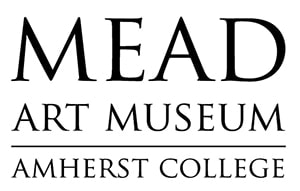
MEAD ART MUSEUM ACQUIRES WORK BY JUNE EDMONDS
June 15, 2020
Luis De Jesus Los Angeles is pleased to announce that the Mead Art Museum in Amherst, MA has acquired work by June Edmonds. Convictions IV (2020) is part of her ongoing series of Flag Paintings, which explore the alignment of multiple identities such as race, nationality, gender, or political leanings. Named for its founder, William Rutherford Mead (an 1867 graduate of Amherst College and a partner in the storied architectural firm of McKim, Mead & White), the Mead holds the art collection of Amherst College, celebrated for its American and European paintings, Mexican ceramics, Tibetan scroll paintings, English paneled room, ancient Assyrian carvings, Russian avant-garde art, West African sculpture, and Japanese prints.
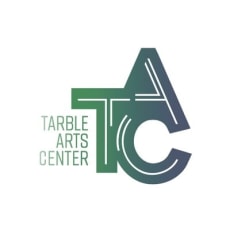
TARBLE ARTS CENTER AT EASTERN ILLINOIS UNIVERSITY ACQUIRES TWO ARTWORKS BY FEDERICO SOLMI
June 2020
Luis De Jesus Los Angeles is pleased to announce that the Tarble Arts Center at Eastern Illinois University in Charleston, IL has acquired two seminal works by Federico Solmi. Chinese Democracy and the Last Day on Earth (2012) is a single-channel video running 10:09 minutes enclosed within a hand-painted presentation box and The Beloved Autocrat (2018) is a unique artist book consisting of 12 bound paintings. Both works were exhibited recently in Solmi's 2019 full scale survey exhibition at the Tarble. The Tarble Arts Center is a major cultural arts resource serving east-central Illinois. Its founding purpose is to “take the arts to the people."
ARTIST TALK: KEN GONZALES-DAY
ECHO/LOCATE PRESENTED BY BRIDGE PROJECTS
May 21, 2020 at 5pm PT via Zoom
The gallery is pleased to announce that Bridge Projects' ongoing event series Echo/Locate will host Ken Gonzales-Day for an artist talk, virtual site visit, and discussion via Zoom. The group will embark upon an hour-long exploration into the purpose and power of the Gonzales-Day's series Searching for California Hang Trees and Erased Lynchings. Gonzales-Day will be in his studio, and the Bridge Projects team will be scattered throughout Los Angeles at locations pertaining to his practice.
INTERVIEW: ZACKARY DRUCKER
"NO SPACE FOR SELF INDULGENCE"
May 20, 2020
The gallery is pleased to announce that the McEvoy Art Foundation has published an interview with interdisciplinary artist Zackary Drucker through their ongoing conversation series titled McEvoy Arts at Home. Interviewed by Steve Polta, director of the San Francisco Cinematheque, Drucker reflects on witnessing her lineage and shifting consciousness through lyrical film-making.
FEATURED: LUIS DE JESUS LOS ANGELES TO PARTICIPATE IN NADA'S NEW PROFIT-SHARING DIGITAL ART FAIR
ARTFORUM
May 14, 2020
“FAIR is NADA’s response to the current situation, in line with our commitment to supporting a global community of galleries and artists,” said NADA executive director Heather Hubbs. “While many of these art spaces have been temporarily closed to the public, this new model provides an opportunity to showcase the best of contemporary art, while demonstrating our collaborative spirit and fostering mutual support for one another.
LUIS DE JESUS LOS ANGELES JOINS GALLERYPLATFORM.LA
HYPERALLERGIC: 80 LA GALLERIES BAND TOGETHER IN AN EFFORT TO SURVIVE THE PANDEMIC
May 14, 2020
GALLERYPLATFORM.LA launches May 15, featuring online viewing rooms for small and blue-chip galleries, video profiles of artists, and a column on the history of LA galleries — all to help galleries stay afloat.
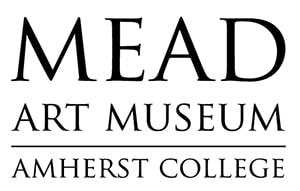
MEAD ART MUSEUM ACQUIRES 7 PHOTOGRAPHS FROM ZACKARY DRUCKER & RHYS ERNST'S "RELATIONSHIP" SERIES
May 2020
Luis De Jesus Los Angeles is pleased to announce that the Mead Art Museum in Amherst, MA has acquired seven photographs from Zackary Drucker & Rhys Ernst's Relationship (2008-2014), a series of intimate snapshots taken by the artists that depicts the arc of their real-life love story. Named for its founder, William Rutherford Mead (an 1867 graduate of Amherst College and a partner in the storied architectural firm of McKim, Mead & White), the Mead holds the art collection of Amherst College, celebrated for its American and European paintings, Mexican ceramics, Tibetan scroll paintings, English paneled room, ancient Assyrian carvings, Russian avant-garde art, West African sculpture, and Japanese prints.
KEN GONZALES-DAY INCLUDED IN "SEEING NOW" AT 21C OKLAHOMA CITY MUSEUM HOTEL
April 2019 - May 2020
This multi-media selection of works by over two dozen artists explores what and how we see today, revealing the visible and hidden forces shaping both what the contemporary world looks like, and how we consume and interpret that information—how visual and psychological perception are evolving in the 21st century.
THE DAVID OWSLEY MUSUEM OF ART ACQUIRES WORK BY JUNE EDMONDS
April 2020
Luis De Jesus Los Angeles is pleased to announce that the David Owsley Museum of Art at Ball State University located in Muncie, IN has acquired work by June Edmonds. Convictions I (2019) is part of her ongoing series of Flag Paintings, which explore the alignment of multiple identities such as race, nationality, gender, or political leanings. Central to the mission and vision of the David Owsley Museum of Art is the global art collection—we turn to it to learn, to celebrate, to heal, to dream, to empower.
ARTIST TALK: LIA HALLORAN AND KIP THORNE TO DEBUT A SECTION OF THEIR NEW BOOK
"THE UNIVERSE IN VERSE" IS PRESENTED BY PIONEER WORKS
April 25, 2020 at 1:30pm PST via Zoom
Lia Halloran and Kip Thorne will debut a section of their book, to be published by Norton this upcoming year, as part of The Universe in Verse. Ordinarily a ticketed charitable event, with all proceeds benefiting a chosen ecological or scientific-humanistic nonprofit each year, the 2020 edition will be livestreamed on April 25, 2020 at 1:30pm PST.

KEN GONZALES-DAY APPOINTED 2019 FLETCHER JONES CHAIR IN ART
SCRIPPS COLLEGE
June 9, 2019
The Scripps College Board of Trustees has announced the appointments of Ken Gonzales-Day, professor of art, to the Fletcher Jones Chair in Art, Julia Liss, professor of history, to the Mary W. Johnson and J. Stanley Johnson Professorship in the Humanities, and Sheila Walker, professor of psychology, to the inaugural appointment of the Laura Vausbinder Hockett Endowed Professorship, effective July 1, 2019.
FEATURED: LUIS DE JESUS LOS ANGELES IN ARTILLERY MAGAZINE
QUARANTINE Q&A: ART, LIFE, AND THE BUSINESS OF ART DURING COVID-19
March 26, 2020
An interview with Luis De Jesus & Jay WIngate by Anna Bagirov in Artillery Magazine.
JUNE EDMONDS WINS INAUGURAL $10,000 AWARE PRIZE FOR WOMEN ARTISTS AT THE ARMORY SHOW
March 5, 2020
US artist June Edmonds has been named the inaugural winner of the $10,000 Aware Prize at The Armory Show. Presented by the Paris-based nonprofit Archives of Women Artists: Research and Exhibitions the juried award goes to one female artist whose work is shown as a solo booth presentation within the fair’s Galleries section.
FEATURED: NICOLAS GRENIER ON CBC RADIO
THE NEW MASTERS: CONVERSATION WITH THE 2019 SOBEY ART AWARD FINALISTS
March 5, 2020
The annual Sobey Art Award is Canada's most prestigious prize for contemporary artists. Established in 2002, the award honors Canadian artists 40 years of age or under, who have exhibited their work in a public or commercial art gallery within 18 months of being nominated.
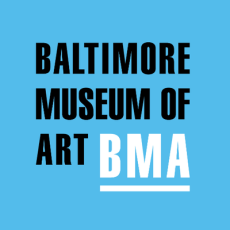
ZACKARY DRUCKER'S "ICONS" OPENS AT THE BALTIMORE MUSEUM OF ART
March 1 - June 28, 2020
Zackary Drucker: Icons weaves together two semi-intertwined personal narratives, juxtaposing newly created self-portrait photographs of artist, producer, and activist Zackary Drucker with pictures the artist has taken of mentor and friend Rosalyne Blumenstein, LCSW, who directed the Lesbian and Gay Community Services Center’s pioneering Gender Identity Project in the 1990s. Depicting two women of different ages and experiences and the scars that they bear, Drucker’s work interrogates assumptions about transformation, beauty, aging, and mortality. Her searching, meticulous self-portraits expand on the groundbreaking Relationship series Drucker co-created a decade ago. Forming part of Drucker’s ongoing project to record and chronicle the trans community, her images of muse and mentor Blumenstein capture the cinematic flavor of the artist’s timely revision of art historical precedent.
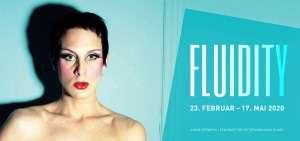
GROUP EXHIBITION: ZACKARY DRUCKER INCLUDED IN "FLUIDITY"
SYKER VORWERK- ZENTRUM FÜR ZEITGENÖSSICH SKYER VORWERK- ZENTRUM FÜR ZEITGENÖSSISCHE KUNST
February 23 - May 17, 2020
Curated by Alejandro Perdomo Daniels and hosted by Syker Vorwerk, Fluidity creates a framework for positions in contemporary art that articulate the spectrum of gender difference, the overriding certainties regarding gender, sexuality, and desire, making it clear that the traditional identity categories of men and women, heterosexual and homosexual represent incomplete approaches to real life experiences. Instead of reproducing normative narratives through affirmation or negation, the exhibition shows perspectives that destabilize systems of normality and power. Based on the work of nine selected contemporary artists, Fluidity addresses a field of tension of unlimited scope and reflects the plurality and performance of contemporary art production in an international context.
A NEW ARMORY SHOW PRIZE WILL AWARD $10,000 TO AN OUTSTANDING FEMALE ARTIST
ARCHIVE OF WOMEN ARTISTS: RESEARCH AND EXHIBITIONS
February 19, 2020
The Armory Show in New York is partnering with the Paris nonprofit Archives of Women Artists: Research and Exhibitions (AWARE) on a new juried award. The AWARE Prize will recognize the best booth dedicated to a solo presentation of a female artist, awarding $10,000 to the artist or her estate. The shortlisted artists are Yuko Nasaka (1939–, Japan) with Belgium’s Axel Vervoordt Gallery; Rina Banerjee (1963–, India) with Galerie Nathalie Obadia of Paris and Brussels; Aase Texmon Rygh (1925–2019, Norway) with Oslo’s OSL Contemporary; Alexis Smith (1949–, US) with Garth Greenan Gallery in New York; and June Edmonds (1959–, US) with Luis De Jesus Los Angeles.
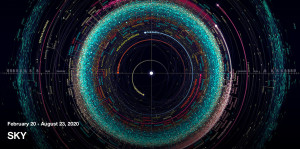
GROUP EXHIBITION: LIA HALLORAN INCLUDED IN "SKY"
ALYCE DE ROULET WILLIAMSON GALLERY AT ARTCENTER COLLEGE OF DESIGN
February 20 - August 3, 2020
An immersive examination of how humans have conceptualized the sky throughout history, SKY will demonstrate how the unfolding realities exposed by new science are affecting change in the understanding of ourselves, our planet and beyond.
ARTIST PANEL DISCUSSION: FEDERICO SOLMI TO PARTICIPATE IN "VIDEO ART::DOOMSDAY DREAMS"
PRESENTED BY THE BROOKLYN RAIL
February 12, 2020
A conversation with Eleanor Heartney, Joan Jonas, Barbara London, and Federico Solmi, moderated by Martha Schwendener, and Phong Bui to celebrate the publication of Barbara London's recent monograph Video Art: the First Fifty Years (Phaidon) and Eleanor Heartney's new book Doomsday Dreams (Silver Hollow Press).
LIA HALLORAN UNVEILS A NEW COMMISSION
SIMON'S FOUNDATION FLATIRON CENTER FOR COMPUTATIONAL ASTROPHYSICS
February 11, 2020
On Tuesday, February 11, 2020 from 1:30 pm to 2:30 pm in the 5th floor Lounge of the Simon's Foundation Flatiron Institute Center for Computational Astrophysics in New York, a new commission by Lia Halloran will be unveiled. Solar (2019) is a mural-sized cyanotype measuring 120 x 131 inches and inspired by the artist's ongoing series Your Body Is A Space That Sees.
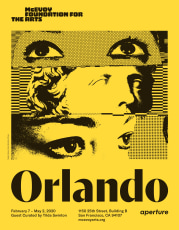
ZACKARY DRUCKER INCLUDED IN "ORLANDO," CURATED BY TILDA SWINTON
MCEVOY FOUNDATION FOR THE ARTS
February 7 - May 2, 2020
Orlando presents recent and newly commissioned photographs inspired by the themes of Virginia Woolf’s prescient 1928 novel, which tells the story of a young nobleman during the era of Queen Elizabeth I who lives for three centuries without aging and mysteriously shifts gender along the way. Orlando is guest curated by Tilda Swinton and organized by Aperture, New York.
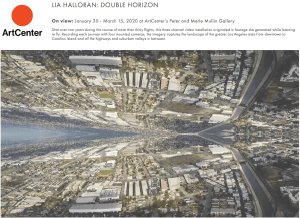
LIA HALLORAN'S "DOUBLE HORIZON" OPENS AT THE PETER AND PEARL MULLEN ART GALLERY AT ARTCENTER COLLEGE OF DESIGN
January 30 - March 15, 2020
Double Horizon features works by Lia Halloran that investigate the personal, physical, psychological, and scientific exploration of space.

HUGO CROSTHWAITE TO SPEAK AT THE BURLINGAME LIBRARY FOUNDATION
January 26, 2020
Kim Sajet, noted art historian and the first woman to serve as Director of the Smithsonian’s National Portrait Gallery, will speak at the Burlingame Public Library on Sunday, January 26th. Born in Nigeria, raised in Australia, and a citizen of the Netherlands, Sajet brings a global perspective to the position. She is also the host of the Portrait Gallery’s new podcast series, “Portraits,” which explores themes of art, history, and biography.
Kim will introduce Hugo Crosthwaite, the first-prize winner of the 2019 Outwin Boochever Portrait Competition. His award-winning stop-motion drawing animation, A Portrait of Berenice Sarmiento Chavez, will be shown at the event.

JUNE EDMONDS FEATURED IN "THIS PLACE," CURATED BY JUNE EDMONDS FEATURED IN "THIS PLACE," CURATED BY JILL MONIZ
QUOTIDIAN, LOS ANGELES, CA
January 25 – March 28, 2020
This PLACE focuses on artists who articulate, correct and/or challenge historical narratives about geographical and cultural perceptions of place. Grounded by never exhibited 1960s ceramic works by Dale Davis — multimedia artist and Brockman Gallery co-founder who made space for the black arts west movement, This PLACE highlights how artists know, remember and reimagine environments that are relevant to their identities, aesthetic concerns and histories that define public visual awareness.
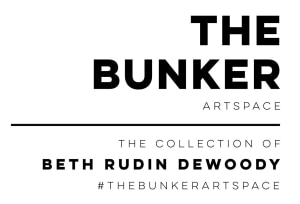
THE COLLECTION OF BETH RUDIN DEWOODY ACQUIRES A WORK BY MIYOSHI BAROSH FOR THE BUNKER ARTSPACE
January 2020
Luis De Jesus Los Angeles is pleased to announce that Miyoshi Barosh's embroidered painting Paintings for the Home (Portrait) (2010) was acquired by the Collection of Beth Rudin DeWoody for The Bunker Artspace in West Palm Beach, FL. Paintings for the Home is a series of works painted to resemble found thrift store paintings which are then embroidered with black abstractions that may be ink blots, decay, or disease. Paintings for the Home (Portrait) was first exhibited at the Gallery in 2010 and again in 2020 as part of a three-gallery city-wide retrospective after the artist's untimely death. Presenting rotating exhibitions and viewable storage of the Beth Rudin DeWoody Collection, The Bunker Artspace opened in December 2017 and showcases a wide range of contemporary art by both well-known and emerging artists, displayed alongside iconic pieces of furniture and other curiosities.
ANDRÉ HEMER AT MASS MOCA RESIDENCY PROGRAM
OPEN STUDIOS ON JANUARY 28, 2020
January 1 - February 1, 2020
We are pleased to announce that André Hemer is an artist-in-residence at The Studios at Mass MoCA. The Studios is MASS MoCA’s artist and writers residency program situated within the museum’s factory campus and surrounded by the beautiful Berkshire Mountains. Operated by MASS MoCA’s Assets for Artists program, the residency runs year-round and invited artists make work on site for periods of 4-6 weeks. Hemer is a resident for the month of January and will be featured in the open studio event. While in residence Hemer has been collecting videos, images, and 3D scans using the environment within the Museum campus—these will be developed into new paintings, sculptures, and video works to be shown during 2020.

THE ELI AND EDYTH BROAD MUSEUM ACQUIRES KEN GONZALES-DAY'S ERASED LYNCHINGS
January 2020
Luis De Jesus Los Angeles is pleased to announce that Ken Gonzales-Day's Erased Lynchings III (2019) was acquired by the Eli and Edythe Broad Art Museum at Michigan State University in East Lansing, MI. Opened on November 10, 2012, the Eli and Edythe Broad Art Museum at Michigan State University (MSU Broad) is a dynamic contemporary art museum, designed by Pritzker Prize-winning architect Zaha Hadid, which serves as both a teaching institution and a cultural hub for East Lansing and the region.
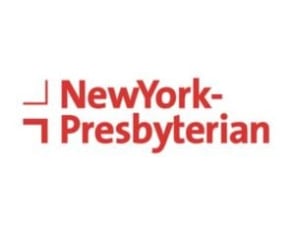
NEW YORK- PRESBYTERIAN ACQUIRES SEVERAL PAINTINGS BY JUNE EDMONDS
December 2019
Luis De Jesus Los Angeles is pleased to announce that New York-Presbyterian Hospital has acquired several paintings by June Edmonds from her ongoing series of abstract paintings that explore how repetition, movement, and balance can serve as conduits to spiritual contemplation and interpersonal connection. The acquisition includes the massive and seminal painting Story of the Ohio: For Margaret (2017), inspired by the story of Margaret Garner, the enslaved African American woman in pre-Civil War America who was known for killing her own daughter rather than allowing her child to be returned to slavery. This event took place near Paducah, Kentucky, on the Ohio River, where June Edmonds did an artist’s residency in early 2017 and was also the inspiration for the events depicted in Toni Morrison's Beloved.
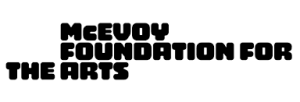
THE MCEVOY FAMILY FOUNDATION ACQUIRES PAINTINGS BY LAURA KRIFKA
December 2019
Luis De Jesus Los Angeles is pleased to announce that Laura Krifka's painting Copy Cat (2017) was acquired by the McEvoy Foundation for the Arts in San Francisco, CA. The McEvoy Foundation for the Arts (MFA) presents exhibitions and events that engage, expand, and challenge themes in the McEvoy Family Collection. Established in 2017, MFA’s vision is to create an open, intimate, and welcoming setting for private contemplation and community discussion about art and culture.
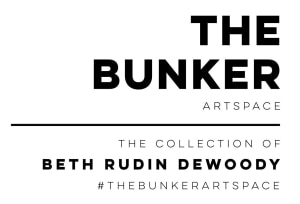
THE COLLECTION OF BETH RUDIN DEWOODY ACQUIRES WORKS BY HUGO CROSTHWAITE FOR THE BUNKER ARTSPACE
December 2019
Luis De Jesus Los Angeles is pleased to announce that Hugo Crosthwaite's drawings Tijuanerias #34 (2011) and Tijuanerias #48 (2011) were acquired by the Collection of Beth Rudin DeWoody for The Bunker Artspace in West Palm Beach, FL. The drawings are part of a series titled Tijuanerias in which the artist, inspired by Goya's Los Caprichos, creates new myths and narratives about the violence and excesses of narco wealth in his hometown of Tijuana. These drawings were featured in the artist's first solo exhibition with the Gallery, Tijuanerias on view from April 14 - May 26, 2012. Presenting rotating exhibitions and viewable storage of the Beth Rudin DeWoody Collection, The Bunker Artspace opened in December 2017 and showcases a wide range of contemporary art by both well-known and emerging artists, displayed alongside iconic pieces of furniture and other curiosities.
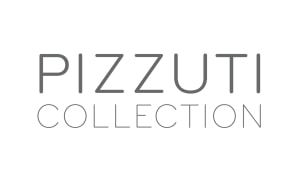
THE PIZZUTI COLLECTION ACQUIRES A PAINTING BY LAURA KRIFKA
December 2019
Luis De Jesus Los Angeles is pleased to announce that Laura Krifka's painting Tipping Point (2019) was acquired by the Pizzuti Collection, Columbus, OH. Originally founded as an independent nonprofit by the Pizzuti family to share exhibitions of contemporary art from their private collection, the organization and its beautifully renovated building were recently acquired by the Columbus Museum of Art.
KEN GONZALES-DAY: DECOLONIZING THE MUSEUM
ARTIST TALK, FACULTY WORKSHOP AND CLASS VISIT AT MIDDLEBURY COLLEGE MUSEUM OF ART
November 21, 2019
The gallery is pleased to announce that Ken Gonzales-Day will be conducting an artist talk and workshop "Decolonizing the Museum" at Middlebury College, in Middlebury Vermont. Through invited expert speakers/facilitators, this workshop series open to faculty and staff seeks to provide participants with leading insights and methods in rethinking how the institution and instructors can promote change against deep-rooted structures of oppression at a curricular/institutional level while fostering greater equity in the classroom.
October 3, 2019, 12:00pm. Crest Room
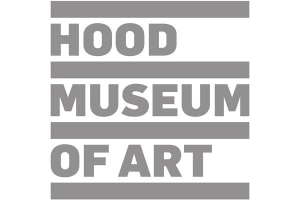
HOOD MUSEUM OF ART ACQUIRES A PHOTOGRAPH BY KEN GONZALES-DAY
November 2019
Luis De Jesus Los Angeles is pleased to announce that Ken Gonzales-Day's photograph Nightfall II (2006) from the series titled Search for California Hang Trees was acquired by the Hood Museum of Art at Dartmouth College in Hanover, NH. Dartmouth's collections are among the oldest and largest of any college or university in the country, but it was not until the Charles Moore–designed Hood Museum of Art opened its doors in 1985 that they were all housed under one roof and made available to faculty, students, and the public.
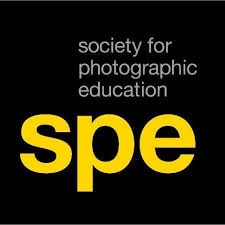
KEN GONZALES-DAY WILL GIVE KEYNOTE ADDRESS AT SOCIETY FOR PHOTOGRAPHIC EDUCATION CONFERENCE "ALL-INCLUSIVE: PHOTOGRAPHY FOR SOCIAL JUSTICE"
November 1 - 3, 2019
The conference All-Inclusive: Photography for Social Justice is co-hosted by the West and Southwest Chapters of SPE and the Department of Art and Art History at Santa Clara University, located in the heart of Silicon Valley, minutes from the San Jose Airport and less than an hour from the old stomping grounds of Group f/64, which includes Carmel, San Francisco, and Oakland.
The conference will explore how photography is used to challenge injustice, pursue social equality, and advance human rights through creative skills in order to inspire social movements, to witness, to resist oppression, to pose the difficult questions, and to stimulate debate and awareness about critical social issues. It will take place concurrently with Ken Gonzales-Day's solo exhibition at Santa Clara University.
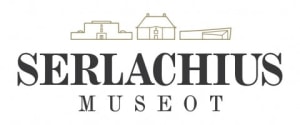
FEDERICO SOLMI FEATURED IN "THE QUEST FOR HAPPINESS- ITALIAN ART NOW" AT SERLACHIUS MUSEUM, MÄNTTÄ, FINLAND
October 26, 2019 - September 27, 2020
The Quest for Happiness – Italian Art Now presents a selection of the most interesting Italian contemporary artists. Their common theme is the quest for happiness. The majority of them have never exhibited in Finland before.
HUGO CROSTHWAITE AWARDED FIRST-PRIZE IN SMITHSONIAN'S NATIONAL PORTRAIT GALLERY OUTWIN BOOCHEVER PORTRAIT COMPETITION
October 26, 2019
Luis De Jesus Los Angeles is proud to announce that gallery artist Hugo Crosthwaite has been awarded First Prize in the Smithsonian’s National Portrait Gallery Outwin Boochever Portrait Competition.
Hugo Crosthwaite’s work will be presented in The Outwin 2019: American Portraiture Today, a major exhibition premiering at the National Portrait Gallery October 26, 2019 through August 20, 2020. The exhibit will present the work of this year’s nearly 50 finalists, including seven artists that were shortlisted for prizes, selected from over 2,600 entries. As the first-prize winner, Crosthwaite receives a cash award of $25,000 and a commission to create a portrait of a notable living person for the museum’s permanent collection.
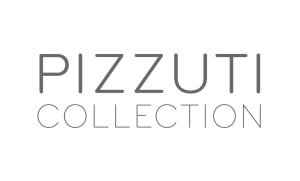
THE PIZZUTI COLLECTION ACQUIRES PAINTINGS BY CAITLIN CHERRY
October 2019
Luis De Jesus Los Angeles is pleased to announce that Caitlin Cherry's painting Solar Asian Doll (2018) was acquired by the Pizzuti Collection, Columbus, OH. Originally founded as an independent nonprofit by the Pizzuti family to share exhibitions of contemporary art from their private collection, the organization and its beautifully renovated building were recently acquired by the Columbus Museum of Art.
FEDERICO SOLMI AND HUGO CROSTHWAITE ARE 2019 OUTWIN BOOCHEVER PORTRAIT COMPETITION FINALISTS
SMITHSONIAN NATIONAL PORTRAIT GALLERY, WASHINGTON, D.C.
October 1, 2019
The Smithsonian’s National Portrait Gallery has announced the finalists for its fifth triennial Outwin Boochever Portrait Competition. Their work will be presented in The Outwin 2019: American Portraiture Today, a major exhibition premiering at the National Portrait Gallery Oct. 26 through Aug. 30, 2020. Every three years, artists living and working in the United States are invited to submit one of their recent portraits to a panel of experts chosen by the museum. The works of this year’s nearly 50 finalists were selected from over 2,600 entries. The first-prize winner, to be announced this fall, will receive a cash award of $25,000 and a commission to create a portrait of a living person for the museum’s permanent collection.
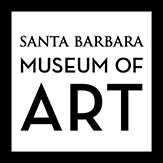
LIA HALLORAN FEATURED IN "THE OBSERVABLE UNIVERSE: VISUALIZING THE COSMOS IN ART" AT SANTA BARBARA MUSEUM OF ART
September 29, 2019 - February 16, 2020
Drawing primarily from SBMA’s permanent collection and supplemented by loans from area collections, The Observable Universe explores a diverse range of artistic representations of the cosmos roughly coinciding with the ‘Space Age’ of the last sixty years.
FEDERICO SOLMI'S SURREAL, SATIRICAL UNIVERSE COMES TO THE BLOCK MUSEUM COLLECTION
September 25, 2019
Past and present, history and amusement, reality and spectacle are conflated and distorted in Federico Solmi’s monumental media work, “The Great Farce” (2017), recently acquired by Northwestern University’s Block Museum of Art. The Block received the multiscreen, limited-edition work as a gift from the artist’s studio in recognition of the museum’s upcoming 40th anniversary and its related initiative “Thinking about History.”
Originally commissioned for the 2017 B3 Biennial of the Moving Image, Frankfurt, Germany, “The Great Farce” is Solmi’s most ambitious work to date in terms of technical complexity, physical scale and scope of content. Featuring a cast of time-traveling world leaders with a feverish madness for power, Solmi’s animation turns a frenzied, fun-house mirror to grandstanding historical figures.
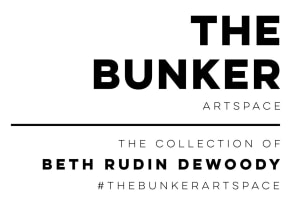
THE COLLECTION OF BETH RUDIN DEWOODY ACQUIRES A PAINTING BY JIM ADAMS FOR THE BUNKER ARTSPACE
September 2019
Luis De Jesus Los Angeles is pleased to announce that Jim Adams's painting Faith (1996) was acquired by the Collection of Beth Rudin DeWoody for The Bunker Artspace in West Palm Beach, FL. The painting is part of a series of portraits of black archetypes that the artist created in the 1990s and 2000s. Presenting rotating exhibitions and viewable storage of the Beth Rudin DeWoody Collection, The Bunker Artspace opened in December 2017 and showcases a wide range of contemporary art by both well-known and emerging artists, displayed alongside iconic pieces of furniture and other curiosities.
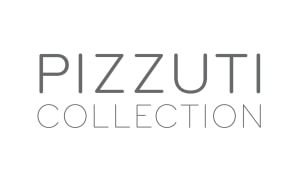
The Pizzuti Collection acquires paintings by June Edmonds
September 2019
Luis De Jesus Los Angeles is pleased to announce that June Edmond's painting Sign of Life Flag (2019) was acquired by the Pizzuti Collection, Columbus, OH. Originally founded as an independent nonprofit by the Pizzuti family to share exhibitions of contemporary art from their private collection, the organization and its beautifully renovated building were recently acquired by the Columbus Museum of Art.
Zackary Drucker's Relationship series discussed in The Body Electric
YBCA Zine
September 9, 2019
An essay by curator Pavel S. Pyś on the exhibition The Body Electric, which originated at the Walker Art Center and will travel to the Yeba Buena Center for the Arts and the Miami Dade College Museum of Art and Design. The exhibition includes works from Relationship (2008-2014) by Zackary Drucker and Rhys Ernst.
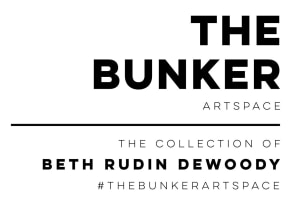
The Collection of Beth Rudin DeWoody acquires a painting by Laura Krifka for The Bunker Artspace
September 2019
Luis De Jesus Los Angeles is pleased to announce that Laura Krifka's painting Piggyback (2019) was acquired by the Collection of Beth Rudin DeWoody for The Bunker Artspace in West Palm Beach, FL. The painting was featured in the artist's first solo exhibition with the Gallery, The Game of Patience on view from September 7 - October 26, 2019. Presenting rotating exhibitions and viewable storage of the Beth Rudin DeWoody Collection, The Bunker Artspace opened in December 2017 and showcases a wide range of contemporary art by both well-known and emerging artists, displayed alongside iconic pieces of furniture and other curiosities.
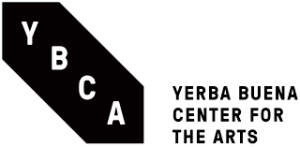
Zackary Drucker featured in "The Body Electric" at Yerba Buena Center for the Arts
September 6, 2019 - February 23, 2020
Yerba Buena Center for the Arts presents the West Coast debut of The Body Electric, an expansive array of more than 70 works revealing the ways that technology changes our collective understanding of the body, everyday life, and sense of self.
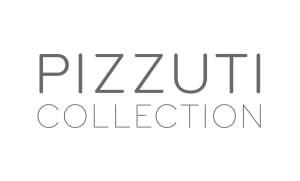
The Pizzuti Collection acquires a painting by Caitlin Cherry
July 2019
Luis De Jesus Los Angeles is pleased to announce that Caitlin Cherry's painting Miasma (2019) was acquired by the Pizzuti Collection, Columbus, OH. The painting was featured in the group exhibition I've Got A Good Mind To Give Up Living And Go Shopping Instead, on view at the Gallery from July 13 - August 17, 2019. Originally founded as an independent nonprofit by the Pizzuti family to share exhibitions of contemporary art from their private collection, the organization and its beautifully renovated building were recently acquired by the Columbus Museum of Art.
Nicolas Grenier Shortlisted for the 2019 Sobey Art Award
June 12, 2019
Luis De Jesus Los Angeles is proud to announce that Nicolas Grenier is a finalist for the 2019 Sobey Art Award. The Sobey Art Foundation and the National Gallery of Canada will present the 2019 Sobey Art Award exhibition at the Art Gallery of Alberta in Edmonton. The exhibition presents the work of the five outstanding Canadian artists who have been shortlisted for the 2019 Sobey Art Award.
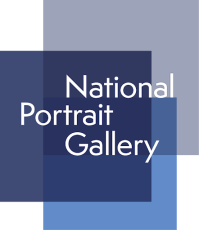
The Smithsonian National Portrait Gallery acquires a photograph by Ken Gonzales-Day
May 2019
Luis De Jesus Los Angeles is pleased to announce that Ken Gonzales-Day's Shonke-Monthin, Osage by Joseph Palmer (National Museum of Natural History, D.C.) (2014) was acquired by the Smithsonian National Portrait Gallery in Washington, D.C. The photograph is part of the artist's ongoing Profiled series and was exhibited at the National Portrait Gallery in the two-person exhibition titled UnSeen: Our Past In A New Light from March 23, 2018 through January 06, 2019

Association of Art Museum Curators Names Recipients of 2019 Awards for Excellence
UNSEEN: OUR PAST IN A NEW LIGHT, KEN GONZALES-DAY AND TITUS KAPHAR CURATED BY TAÍNA B. AND ASMA NAEEM
May 6, 2019
The Association of Art Museum Curators (AAMC) and the AAMC Foundation has named the 20 U.S. curators who will be receiving its 2019 Awards for Excellence. This year’s honorees were selected from 150 nominations, and work in a variety of fields, including native and indigenous art, contemporary art, folk art, medieval art, American art, media art, and photography.
Judith Pineiro, executive director of AAMC and AAMC Foundation, said in a statement, “For 15 years, curators have recognized the trailblazing achievements of their peers through our annual Awards for Excellence. It is a privilege to celebrate this year’s awardees who, through their work, have fostered dynamic dialogue and broader engagement in the arts.”
Taína B. Caragol, curator of painting and sculpture and Latinx art and history at the National Portrait Gallery, Smithsonian Institution, and Asma Naeem, chief curator at the Baltimore Museum of Art, for “UnSeen: Our Past in a New light, Ken Gonzales-Day and Titus Kaphar” at the National Portrait Gallery
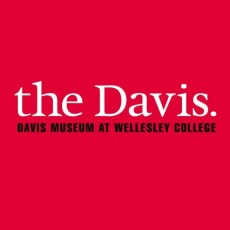
The Davis Museum at Wellesley College acquires paintings by June Edmonds
April 2019
Luis De Jesus Los Angeles is pleased to announce that June Edmond's painting A Tisket (2018) was acquired by the Davis Museum at Wellesly College in Massachusetts, USA. One of the oldest and most acclaimed academic fine art museums in the United States, the Museum was founded more than 120 years ago by the first President of Wellesley College. The Davis collections, which span global history from antiquity to the present and include masterpieces from almost every continent, are housed today in an extraordinary museum building, designed by Rafael Moneo, winner of the Pritzker Architecture Prize. In addition to dynamic presentations of the permanent collections, and installations that support specific coursework and research interests, the Davis hosts a rotating series of engaging temporary exhibitions and programs organized to inform, delight, and challenge its visitors.
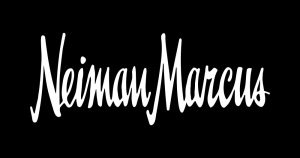
The Neiman Marcus Art Collection acquires work by Dennis Koch
April 2019
Luis De Jesus Los Angeles is pleased to announce that Dennis Koch's color pencil drawing Untitled (Versor Parallel) (2019) was acquired by the Neiman Marcus Art Collection in Dallas, TX. The Neiman Marcus Art Collection began in 1951 when Stanley Marcus purchases a large-scale Alexander Calder mobile and reflects the company’s broad interests in high quality, creativity artworks that span all media. With the initial purpose of enriching the environment and supporting artists who explore unusual paths of creative expression, the collection has grown to hold some 2,500 works of art.
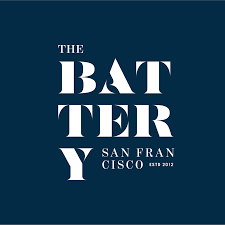
The Battery acquires a photograph by Chris Engman
February 2019
Luis De Jesus Los Angeles is pleased to announce that Chris Engman's Landscape for Quentin (2017) was acquired by The Battery in San Francisco, CA. The Battery is a private social club, a boutique hotel, a hub for music, arts, and literature, and a philathropic organization founded by Michael and Xochi Birch in 2014.
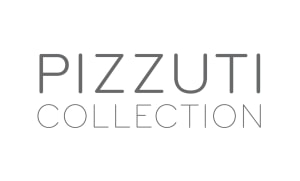
The Pizzuti Collection acquires an additional painting by Britton Tolliver
January 2019
Luis De Jesus Los Angeles is pleased to announce that Britton Tolliver's painting Traffic Light (2018) was acquired by the Pizzuti Collection, Columbus, OH. Originally founded as an independent nonprofit by the Pizzuti family to share exhibitions of contemporary art from their private collection, the organization and its beautifully renovated building were recently acquired by the Columbus Museum of Art.
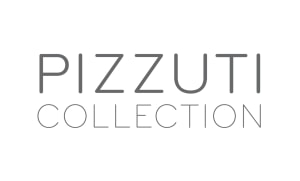
The Pizzuti Collection acquires a painting by Caitlin Cherry
January 2019
Luis De Jesus Los Angeles is pleased to announce that Caitlin Cherry's painting Sapiosexual Leviathan (2019) was acquired by the Pizzuti Collection, Columbus, OH. The painting was featured in the artist's first solo exhibition with the gallery, Threadripper, on view from January 12 - February 9, 2019. Originally founded as an independent nonprofit by the Pizzuti family to share exhibitions of contemporary art from their private collection, the organization and its beautifully renovated building were recently acquired by the Columbus Museum of Art.
EDRA SOTO RECIEVES FOUNDWORK ARTIST PRIZE
The gallery is pleased to announce that Edra Soto has received the Foundwork Artist Prize. The Foundwork Artist Prize is an annual juried award that we inaugurated in 2019 to recognize outstanding practice by contemporary artists. The honoree receives an unrestricted 10,000 USD grant and studio visits with the distinguished jurors. The honoree and three short-listed artists are also featured in interviews as part of our Dialogues program.

The Fidelity Investments Corporate Art Collection acquires several works by Dennis Koch
August 2018
Luis De Jesus Los Angeles is pleased to announce that the Fidelity Investments Corporate Art Collection has acquired several Cutouts (2018) by artist Dennis Koch. Part of a new series in which original LIFE Magazines are carved page by page to reveal interior images, thus transformed into hand-cut magazine sculptures, these works interrupt and reconstruct common narrative strategies while compressing time and space into one image. Launched in 1980 in Boston, MA, Fidelity Investments Corporate Art Collection collects artwork that is experimental, intellectually curious, and technically precise across all media.
Artnet News Profiles Luis De Jesus: "I’ve Always Been an Advocate for Diversity"
LUIS DE JESUS HOPES THAT A NEW CLASS OF LATINX COLLECTORS WILL EMERGE IN THE US LIKE IT HAS IN THE AFRICAN-AMERICAN COMMUNITY.
July 23, 2018
A former artist and one of only a few successful Latinx dealers in the US, Luis De Jesus understands the difficulty of getting the art world to pay attention. Since founding his gallery Luis De Jesus Los Angeles in 2010, he has made a career of showing young artists with something to say, and has quietly become a staple of the city’s art scene in the process.
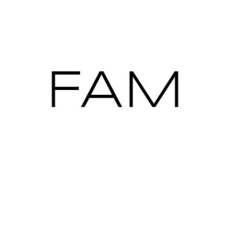
Flaten Art Museum acquires work by Ken Gonzales-Day
May 2018
Luis De Jesus Los Angeles is pleased to announce that Ken Gonzales-Day's Hands Up (2015) was acquired by the Flaten Art Museum at St. Olaf College in Northfield, MN. This photograph was first exhibited in the artist's second solo exhibition at the Gallery titled, Run Up on view from April 4 through May 9, 2015. It was exhibited again in Ken Gonzales-Day: Shadowlands at the Flaten Art Museum from September 1 through October 29, 2017. Founded in 1976 at St. Olaf College, the Flaten Art Museum has evolved from college gallery to collecting museum with programming that is regional, national, and even international in scope.

The Microsoft Art Collection acquires works by Chris Engman and Lia Halloran
February 2018
Luis De Jesus Los Angeles is pleased to announce that Chris Engman's photograph Prospect (2016) from his ongoing Prospect and Refuge series and Lia Halloran's drawing Andromeda, after Mollie O' Reilly (2017) from her ongoing series Your Body Is A Space That Sees were acquired by the Microsoft Art Collection in Redmond, WA. The Microsoft Art Collection was launched in 1987 by a committee made up of employees interested in collecting and displaying artwork created by artists from the community. Over the past quarter-century, the Collection has mirrored the corporation’s meteoric growth with nearly 5,000 artworks on display in over 130 buildings throughout North America.
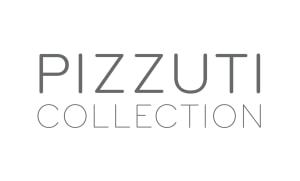
The Pizzuti Collection acquires three works by Britton Tolliver
December 2017
Luis De Jesus Los Angeles is pleased to announce that Britton Tolliver's paintings Icarus (2017), Distant Roam (2017), and Night Goat (2017) were acquired by the Pizzuti Collection, Columbus, OH. Originally founded as an independent nonprofit by the Pizzuti family to share exhibitions of contemporary art from their private collection, the organization and its beautifully renovated building were recently acquired by the Columbus Museum of Art.
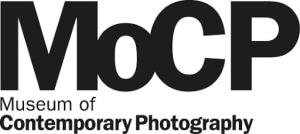
Museum of Comtemporary Photography at Columbia College acquires several works from Zackary Drucker's Relationship series
December 2017
Luis De Jesus Los Angeles is pleased to announce that six photographs from Zackary Drucker's Relationship (2008-2014) were acquired by the Museum of Comtemporary Photography at Columbia College in Chicago, IL. Relationship (2008-2014) is a series of intimate snapshots taken by Zackary Drucker and Rhys Ernst that depicts the arc of their real-life five-and-a-half year relationship, during which one transitioned from female to male, and the other from male to female. Founded in 1976 by Columbia College Chicago as the successor to the Chicago Center for Contemporary Photography, the Museum of Contemporary Photography began collecting in the early 1980s and is the world’s premier college art museum dedicated to photography with more than 15,000 objects by over 1,500 artists in its collection.

Minnesota Museum of American Art acquires work by Ken Gonzales-Day
October 2017
Luis De Jesus Los Angeles is pleased to announce that Ken Gonzales-Day's photo-based wallpaper The Lynching of Spanish Charlie (2016) was acquired by the Minnesota Museum of American Art in St. Paul, MN. The work is part of the artist's ongoing Erased Lynchings series and was first on view at the Museum in the exhibition Ken Gonzales-Day: Shadowlands from January 19 through April 16, 2017.

THE PHYLLIS AND ROSS ESCALETTE PERMANENT COLLECTION OF ART AT CHAPMAN UNIVERSTIY ACQUIRES WORKS BY LIA HALLORAN AND KEN GONZALES-DAY
July 2017
Luis De Jesus Los Angeles is pleased to announce that Lia Halloran's Triangulum, After Adelaide Ames (2017), Paper Dolls (2016), and Ken Gonzales-Day's 41 Objects Arranged by Color (2016) were acquired by the Phyllis and Ross Escalette Permanent Collection of Art at Chapman University in Orange, CA. Both of Halloran's works are part of Your Body is a Space That Sees an ongoing series of cameraless cyanotypes that highlight the achievements of the Harvard Observatory female researchers who made significant contributions to the field of astronomy. Gonzales-Day's photograph is part of his ongoing Profiled series in which the artist photographs sculptures of the human form as found in international museum and anthropology collections as a way to reveal the emergence, idealization, and even folly of race. Beyond its role in curating art in public spaces, the Escalette Collection is a learning laboratory that offers diverse opportunities for student and engagement and research, and involvement with the wider community.
INTERVIEW BY A. MORET WITH LUIS DE JESUS LOS ANGELES
Volta Basel 10/ Booth #C21
September 2014
A. Moret interviews Luis De Jesus on the gallery's participation in VOLTA Basel 10.

